Matador Network's Blog, page 1017
September 10, 2019
Where to travel for perfect weather

Remember, friends, nothing lasts forever. This is especially important to remember as you bask in the late-summer sunshine this time of year, wondering how on earth the weather could ever be anything less than perfect. But give it a month or so, and you’ll start longing for the days of mid-70s sunshine, and wondering how you can get back to them.
The good news is, if you’ve got a ton of money and can be gone for an entire year, you can spend all of 2020 chasing ideal temperatures. Reservations.com mapped out an entire yearlong itinerary where you’ll get a week in 52 different destinations where the weather doesn’t go below 70 or above 76 degrees. It takes you through six continents to some places you never knew existed, and is about the most comfortable way you’ll ever see the world.

Photo: Reservations.com
January 1 — Bariloche, Argentina
What better place to start 2020 than along the shores of stunning lakes in Patagonia? You’ll enjoy the mountain town’s best weather of the year, where you can sun yourself in the shadow of the Andes, or trek the epic 33-mile trail from Pampa Linda to Colonia Suiza. This time of year the mountain passes are all open, and you’ll encounter the least chance of wind and snow.
January 8 — Valparaiso, Chile
Chile’s vibrant port city sits right on the edge of Chilean wine country, meaning you can spend your afternoons lounging around the bohemian cafes near the water, then venture out to the countryside for an afternoon of wine tasting. You can also take the Peel Elevator to the top of Cerro Alegre, and enjoy spectacular views of the city and the ocean beyond.
January 15 — Arequipa, Peru
While Peruvian cities like Cusco are oft over-touristed, the capital of the mountainous Arequipa region is a colonial gem, surrounded by three towering volcanoes and void of visiting masses. Its arches and gothic cathedrals — like the Basilica Cathedral and the Santa Catalina Monastery — make it one of the most architecturally significant cities in the world. It’s also central to endless outdoor adventures, including hiking volcanoes and rafting the Rio Chili.
January 22 — Guatape, Colombia
Finding perfect, low-humidity weather in Colombia can be tough, what with the humid Caribbean beaches and wind-swept mountains. But this Andean resort town between Bogota and Medellin is a colorful, hidden gem that’s warmer than locales in the higher elevations, but still dry and pleasant. The city sits along a series of lakes, where water recreation abounds. In town, take time to examine the detailed frescoes depicting agricultural life in rural Colombia.
January 29 — Panajachel, Guatemala
Late January is the ideal time to visit the glittery waters of Lake Atitlán, and enjoy some of the most spectacular sunsets in Central America. Panajachel has avoided much of the tourism rush that’s affected larger towns on the lake, and taking a kayak on the water is every bit the serene experience people seek when coming to Central America. The Atitlán nature reserve is close by too, if you’re up for some zip lining or day hikes.
February 5 — La Paz, Mexico
Heading north to begin February, you’ll find yourself on the southern tip of Baja California enjoying the cool sea breeze in the hot Mexican desert. Whales like to come around La Paz this time of year too, so don’t be surprised if you see a tail flip in the distance while you’re enjoying tequila at sunset. If the Sea of Cortez looks inviting, the surfing here is some of the best in North America, and you may even find yourself swimming right next to a sea lion.
February 12 — Monterrey, Mexico
There’s a reason Mexico is one of the most popular winter destinations in the world, so spend an extra week there and explore this mountainous industrial hub. Get some exercise running around the Parque Fundidora, an old industrial park converted into green space, complete with an imposing steel museum. You might also want to run along the Paseo Santa Lucia, a path by an artificial teal lake that’s one of Mexico’s most impressive feats of engineering.
February 19 — Las Palmas, Spain
Late winter is the ideal time to hit North Africa, and while, yes, technically Las Palmas is part of Europe, geographically it feels distinctly African. Relax after your long journey across the Atlantic on Las Canteras Beach, or get under the sea and dive the Canary Islands’ famously clear water. The colorful city is also home to some unique neighborhoods, like the English-inspired Ciudad Jardin, or the hipster restaurants and bars along Plaza Cairasco.
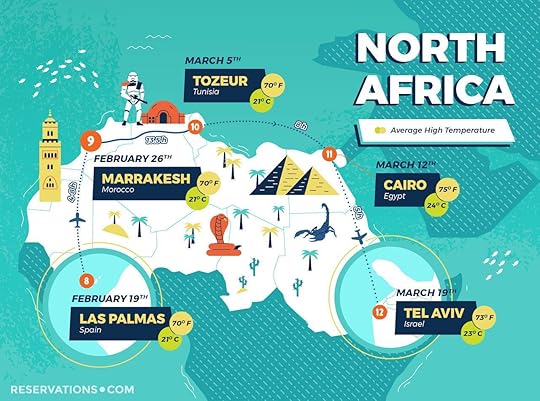
Photo: Reservations.com
February 26 — Marrakech, Morocco
The final week of February gets a little more Indiana Jones-ish as you delve deep into the bazaars and medinas of Marrakech. Though the city certainly has an Old World charm — eating kebabs and strolling the smoky stands of the old city is a must — you’ll find Marrakech also has a highly westernized side. And, if you don’t mind a little cigarette smoke, the nightlife can be better than a lot of places in Europe.
March 5 — Tozeur, Tunisia
You won’t be hitting the Sahara Desert on an agenda of perfect-weather destinations, but Tozeur — an oasis city near the Sahara’s edge — is about as close as you’ll get. Hit the Chebika Mountain Oasis for some desert cliff diving (don’t worry, there’s water), then stroll through the medina in Ouled el Hadef. This medina is not nearly as chaotic as the ones you just saw in Marrakech, and may even feel a little more immersive.
March 12 — Cairo, Egypt
Though March temps here inch all the way to 75 degrees, it’s still a perfectly pleasant time to explore Egypt’s largest city. The famous pyramids are only about 11 miles away from downtown across the Nile, and while spring break crowds will definitely be there in full force, it’s still a heck of a lot better than dealing with summer crowds AND triple-digit temps.

Photo: Reservations.com
March 19 — Tel Aviv, Israel
Venturing north from Africa into the Middle East, your first stop will be in Tel Aviv, a little slice of California at the crossroads of Europe and Asia. The beaches here are the best in the region, and the city has become a top choice for food tourists in recent years. Tel Aviv might not be as historic as other parts of Israel, but it does have some fascinating museums like the Tel Aviv Museum of Art and the Eretz Museum, which tells the story of how this beachside metropolis came to be in under 100 years.
March 26 — Haifa, Israel
With postcard-worthy weather and clear blue waters, why not stay in Israel an extra week? Haifa, a port city about an hour north of Tel Aviv, is a relaxing place to unwind along the slopes of Mount Carmel. The city is home to the only Japanese art museum in the Middle East, as well as cable car rides to the top of Carmel Ridge, with panoramic views of the Med and beyond.
April 2 — Baalbek, Lebanon
One would think going from Northern Israel into neighboring Lebanon would be a simple little drive along the coast. Any maybe once upon a time it was, but in 2019, getting the 109 miles between these two cities involves driving to Tel Aviv, then taking two fights to Beirut, then driving another hour to historic Baalbek. Consider this leg your education in the complications of life in the Middle East. Once in Baalbek, though, the ancient Roman architecture will take your mind off your just-completed, cross-border trek.
April 9 — Antalya, Turkey
Your most Instagrammable moments of 2020 begin in April, when you tour ancient ruins and sun yourself on the not-yet-packed beaches of Antalya. Be sure to hit Hadrian’s Gate, a triple-arched entrance to what was once the walled city, dating back to the year 130. You can also take a short trip out to Duden or Kursunlu waterfalls, if a week in perfect beach weather grows tiresome.

Photo: Reservations.com
April 16 — Larnaca, Cyprus
This island in the far-eastern Med is still largely undiscovered by Americans, and in mid-April Europeans won’t be flocking there quite yet either. You’ll have the sands at Finikoudes and Mackenzie beaches all to yourself, and it’ll be perfect weather to venture up into the Troodos Mountains. Make sure also to tour the ruins at the Kato Paphos Archaeological Park, where you’ll find ancient Roman mansions with the mosaic floors still intact.
April 23 — Chania, Crete
Your European adventure continues on the Greek island of Crete, not quite yet in full summer insanity. This 14th century port city boasts one of the oldest lighthouses in the world, which was renovated for visitors in 2006. The waterfront along the old port is a must-visit too, not just for the colorful buildings but also for the restaurants and cafes ideal for al fresco dining.
April 30 — Catania, Italy
April closes out your first few weeks on the Med in the Sicilian port town of Catania, which dates back over 2,700 years. The island’s second-largest city is known for its ornate cathedrals, but also for sitting in the shadow of Mount Etna, an active volcano that somehow hasn’t destroyed Catania yet. A trip to the top lets you stare into its menacing caldera, and, at just over 10,000 feet, it’s actually doable in a day.
May 7 — Naples, Italy
After a week of trekking up Mount Etna it’s time to reward yourself with the best pizza in the world. Feel free to gorge yourself on Neapolitan-style pies, then burn them off walking through the ruins of cities that weren’t so lucky in the volcano department on tours of Pompeii and Herculaneum.
May 14 — Split, Croatia
Come here during yacht week and you’ll wonder why anyone would visit again. But come during May, and you might even get to take some Game of Thrones selfies without waiting for 100 people to get the same picture first. This historic seaside town might be the most scenic on the Adriatic, and was interestingly the retirement locale of the Emperor Diocletian.
May 21 — Rabat, Malta
It seems like this little island between Sicily and Africa was the travel darling of 2017, with pictures of Arabic/Latinate Malta popping up all over your social media feeds. The “silent city” of Mdina was probably the most frequent image, a fortified village dating back nearly 4,000 years that’s been meticulously maintained. With summer crowds now in full effect, May is also an excellent time to dive wrecks off the coast.
May 28 — Barcelona, Spain
While it might be Memorial Day back home, it’s just the last weekend in May in Spain, and also the last weekend before hoards of Americans invade the city. So shop along the Rambla and grab some absinthe in the landmark dive Bar Marsella, the city’s oldest bar that serves the stuff out of a questionable-looking glass bottle. But for the love of all that’s holy, do not come back pronouncing this place with a lisp.
June 4 — Lisbon, Portugal
Lisbon is like the San Francisco of Europe, a cool coastal city built on seven hills where you’ll feel exhausted walking from dinner to your post-meal drinks. It’s also one of the most beautiful in Europe, the second-oldest capital, filled with stunning architecture and colorful ocean views. The food here is fantastic and cheap — but if the options are overwhelming head to the Time Out Market, which despite having an American name is loaded with some of the city’s best restaurants.
June 11 — Bordeaux, France
After a hectic week in Lisbon, venture inland to France’s most renowned wine region. You’ll have to hit the juicy highlights at Château La Dominique, Cheval Blanc, and Maison du Vin de Saint-Emilion, but the city has more to offer than just fermented grapes. You can cool off from the ideal weather in the world’s largest reflecting pool, visit the world’s top wine museum at La Cite du Vin, or hit Bordeaux’s only whiskey distillery at Moon Harbour.
June 18 — Geneva, Switzerland
If you’re taking a year to chase the perfect temperatures, hopefully you budgeted for it, too. Because while Geneva is one of the most picturesque cities in the world, set right on the shores of Lake Geneva, your morning coffee will likely cost you $8. Cost aside, if you have time jump on a train and spend a couple of days in Montreux, too. Its casino houses a pretty cool Queen museum, and it feels a little like New Orleans minus the humidity.
June 25 — Berlin, Germany
You’ll close out Europe just as the crowds are starting to get unmanageable, with a trip to the continent’s most fascinating city for modern history. The once-divided German capital is teeming with tributes to its turbulent 20th century, including the Topography of Terror — a museum dedicated to the Gestapo — and the Checkpoint Charlie museum, which tells the bizarre, terrible history of the Berlin Wall.

Photo: Reservations.com
July 2 — Nairobi, Kenya
People rarely think of east-central Africa as being “temperate,” but Kenya in July is about as nice of weather as you’ll find on the planet. If you’ve got the time and money, it’s the perfect jumping-off point for a safari in Mount Kenya or Buffalo Springs national reserves. If you’d rather stay in town, you can still get a heavy dose of African nature at Nairobi National Park, or the Karura Forest Reserve.
July 9 — Monkey Bay, Malawi
The trip from Nairobi to Monkey Bay is certainly a lesson in African infrastructure. Theoretically, the two-hour flight from the Kenyan capital to Lilongwe is pretty straightforward, but airlines in Africa don’t exactly run on the regimented schedule we’re used to. Do yourself a favor and think of the trip as a cultural experience, as you should the three-hour drive from Lilongwe to this city on Lake Malawi. Clear your head at Lake Malawi National Park, a World Heritage site where the clear waters teem with fish.
July 14 — Siavonga, Zambia
Staying in the realm of perfect weather is not an easy task, as you navigate two buses and another intra-African flight to Siovonga. Once you’re there, however, it’s all relaxation and you’ll learn how this village on the shores of Lake Kariba earned its nickname as the “Riviera of Zambia.”
July 19 — Hwange, Zimbabwe
If you didn’t get your perfect weather safari fix in Kenya, all is not lost as game drives through Hwange National Park offer nearly nonstop viewings of elephants and lions. It’s also only about 65 miles from Victoria Falls, an easy day trip and an ideal activity when you start saying stuff like “Seen one cheetah, seen ‘em all.”
July 30 — Pretoria, South Africa
Lost between the coastal beauty of Cape Town and the wild animals of Kruger National Park is the South African administrative capital of Pretoria. It’s best known for its endless jacaranda trees, which give the city a purple tint — although it may be too early for them in July, as they start blooming in September. It’s also home to some of the most impressively tall buildings in South Africa, including the Shanghai-worthy Telkom Tower.
August 6 — Baie du Tombeau, Mauritius
For secluded paradise in Africa, it’s hard to top these tropical islands east of Madagascar. You won’t have to worry about much in the way of crowds or overtourism, and the white sandy beaches butt right up against beautiful light blue water. Visit some of the spas around the village for complete relaxation, then head to the northeast part of the island for one of the best skydiving views in the world.

Photo: Reservations.com
August 13 — Darjeeling, India
The foothills to the Himalayas are another place not too many people would think of as “temperate,” but during mid-August this town in west Bengal is a comfortable 72 degrees. Take the Batasia Loop toy train through a 50,000-square-foot ecological garden, then head to Nightingale Park and meditate on the reflection of Kanchenjunga, the world’s third-highest mountain, in the park’s still lake.
August 18 — Paro, Bhutan
Delve a little deeper into the Himalayas and drive a day into Bhutan. Deep in a lush valley you’ll find the village of Paro, with ornate pagodas and colorful homes. The accommodating weather will be perfect for a hike to the Taktsang Monastery, a cliffside structure that makes you wonder how on earth it was ever built.
August 23 — Ulan-Ude, Russia
Saying you’re going to Siberia for the perfect weather sounds a little like going to Jakarta for the fresh air, but in late August this city in east Siberia, just north of Mongolia, clocks in at around 73 degrees. It’s the best place in the world to learn about the seldom-seen Buryat culture, its food, and its trademark throat singing.
September 1 — Ulaanbaatar, Mongolia
Late summer might be the best to try out a little yurt-camping in the Mongolian steppes, and while they won’t be as temperate at the capital they also won’t be as inhospitably awful as they might be in colder months. If yurting is not for you, Ulaanbaatar is surprisingly cosmopolitan, and you can learn how important Mongolia has been to world development at the National Museum.
September 8 — Sapporo, Japan
Before it was the beer you only order at sushi restaurants, Sapporo was the name of a city that hosted the 1972 Winter Olympics. It’ll be a little warm for ski season, but you can still get up into the surrounding mountains and enjoy the onsen spas. Then head back into town and venture to the top of the TV Tower for 360 degree views of the alpine scenery. Finally, make sure to visit the famous brewery so you can tell everyone back home how it “just tastes different in Japan.”
September 15 — Sokcho, South Korea
Sokcho may be the world’s only city to see a tourism boom from Pokemon Go, as a glitch in the system led literally thousands of people here chasing the game’s “monsters.” Once they arrived, they found a charming seaside town with one of the best beaches in the country, and the city’s secret was out. Sokcho is also close to Seoraksan National Park, where you can trek or cable car to the top of Ulsanbawi for sweeping views of the East Sea. Or enjoy a peaceful afternoon at Biryong Falls.
September 22 — Beijing, China
Thought it was a bit weird to go straight from India to Siberia, skipping one of the largest countries in the world? Sure, but when you’re chasing perfect weather sometimes the path isn’t necessarily efficient — and, if you’re trying to see Beijing, then late September is the best time to do it. The Great Wall will still have more people around it than you’d anticipated, but at least you’ll be fighting them for selfie space in 73-degree weather.
September 29 — Tokyo, Japan
The concrete canyons and bright lights of Tokyo can trap heat in ways almost nowhere else can, but in late September it’s typically a fairly manageable 73 degrees. You might take this opportunity to try and climb Mount Fuji, as it’ll be the easiest time of year to try. Or just post up in a cat cafe or karaoke bar and enjoy the city sans AC.
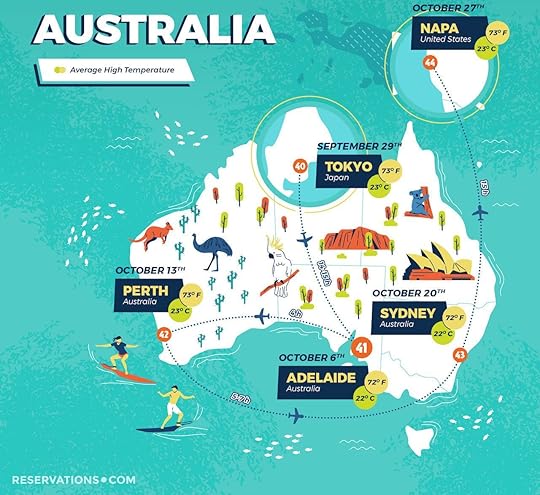
Photo: Reservations.com
October 6 — Adelaide, Australia
October is Australia’s spring, which means the weather will be absolutely perfect for you to visit Adelaide’s landmark botanic garden or go wine tasting through Barossa. Since you’re this far south, you also might want to check out Kangaroo Island about 130 miles southwest. As the name might imply, it has some of the best concentrations of undisturbed Aussie wildlife with 23 trails crisscrossing the island to view them all.
October 13 — Perth, Australia
With most of October spent down under, you’d be remiss not to check out some of the lesser-visited cities in the country. Perth, which sits on Australia’s oft-forgotten west coast, has beaches just as lovely as you’d find on the other side of the country — with a fraction of the people. Hit up Cottesloe Beach for sunset, or for a full day adventure make the trip to Rottnest Island and bask in the white sand and turquoise water.
October 20 — Sydney, Australia
Close out your almost-month in Australia in its largest city, where the brutal summer humidity has yet to set in and you can enjoy Bondi Beach without having to perpetually jump in the ocean. If you’ve tired of the landmarks, delve into the city’s lesser-visited neighborhoods like Surry Hills, once a warehouse district transformed into a hotbed of restaurants and cocktail bars. Or Newtown, the de facto college district for Sydney University.

Photo: Reservations.com
October 27 — Napa, California
Weather-wise, there’s never really a bad time to head to California wine country, but late October brings you here at the tail end of harvest season, with minimal heat and almost no chance of fires. Cheap Napa Valley will not be, so if you’re looking for something a little more cost-effective then Sonoma Valley is only a short drive away.
November 5 — Los Angeles, California
Say what you will about LA, nobody’s ever complained about the weather. November, however, is when the city cools to an ideal 74 degrees, and at night you may even need to pack a jacket. Conveniently, the pre-Thanksgiving weeks leave Disneyland with its shortest lines of the year. And you’ll have two football teams, two basketball teams, and two hockey teams to watch as well.
November 9 — Las Vegas, Nevada
Weather has never really been a factor in planning a Vegas vacation, since pretty much everything in the city is designed to keep you indoors. But maybe the pool party at Encore will be a little less dehydrating in November, and once you’ve tired of endless hedonism you can explore one of America’s best cities for outdoors in the fall.
November 15 — Austin, Texas
Though Austin lost its “keep it weird” reputation once half of California moved in, it’s still a fantastic place to spend a weekend in the fall. UT football is in full swing, and even if you’re not a big Longhorns fan you can still catch plenty of live music and barbecue everywhere in the city. It’s also an ideal time to visit Barton Springs, since kids are in school and locals think it’s too cold to swim.
November 22 — New Orleans, Louisiana
That Bourbon Street hangover will hurt a little less with the reduced humidity and 70-degree temperatures that come in late November. And we mean just that, a little less — the weather’s not an excuse to get carried away with the purple drink at Lafitte’s. Still, the cool temps afford the perfect opportunity to do something other than drink in the Big Easy, like taking a long run through City Park.
December 2 — Orlando, Florida
With school children squarely back in their desks after Thanksgiving, and parents burnt out on travel and feeling the holiday cash pinch, Orlando’s bevvy of theme parks are as empty as you’ll find them all year. You also won’t have to bring three changes of clothes or buy a Mickey Mouse poncho for the afternoon thunderstorms, as December weather in Orlando lends itself nicely to walking from ride to ride with minimal lines.
December 9 — Miami, Florida
Just after the rush of Art Basel but before the onslaught of New Year’s, mid-December might strike the perfect balance of ideal weather and thinned crowds in South Florida. It’s also a beautiful time of year to venture into the Everglades, where you can hike without constantly swatting mosquitoes, and enjoy a leisurely airboat ride through the mangroves minus the blistering heat.
December 15 — Mount Pleasant, Bermuda
Bermuda is sometimes confused with the Caribbean, what with its abundance of pink sand beaches and clear blue waters. But it is, in fact, due east of the Carolinas, and in December still boasts temperatures in the low 70s. That might be a little chilly for snorkeling around Horseshoe Bay, but still warm enough to kick back on the sand and Instagram the heck out of the mesmerizing rock formations.
December 25 — Nassau, Bahamas
Christmas in the Caribbean! There’s nothing quite like it, and while this island nation took a beating this month from Hurricane Dorian we have full faith by December it’ll be open and ready for us to finish our year of chasing perfect weather. Show up a little early and you can enjoy the novelty of watching college football on a tropical island at the Bahamas Bowl. Then maybe after Christmas head a little bit south and hit the best New Year’s party in the region at Foxy’s in the British Virgin Islands. 

More like this: This perfect road trip keeps you in 70 degree weather all year
The post This map shows how to stay in perfect weather all year appeared first on Matador Network.

Rare fruit you can order from Amazon

Sometimes, out of all the dishes and delicacies we taste abroad, it’s the fresh local produce that leaves the greatest impression. For me, it was the fruit in Bali, where market hauls yielded armfuls of mangosteens that married the sweetness of peaches with the tartness of plums and crisp, juicy snakefruit with its scaly brown skin.
Back home, rare fruit can be hard to find. Until 2007 it was illegal to import mangosteens to the US in fear they’d introduce Asian fruit flies. Even though the ban’s been lifted, I haven’t seen the deep purple fruit in the produce section of my local Whole Foods. However, it is possible to find. Outside the odd South Florida farmers market, the best chance most of us have at sampling hard-to-find fruits is by digging up the passwords to our Amazon accounts. Both Amazon and Etsy are surprisingly reliable sources of the following fruits you’d be hard-pressed to find elsewhere, whether you’re looking to satisfy your curiosity or a post-trip craving.
1. Cherimoya

Photo: I_life/Shutterstock
Mark Twain is often credited with calling this sweet, succulent fruit the “most delicious fruit known to men” and “deliciousness itself.” It has a distinctly tropical, pineapple-meets-papaya flavor and creamy flesh that can be scooped out with a spoon the way many of us eat avocados. Also known as custard apple, cherimoya is native to South America, from the highlands of Ecuador and Peru to Colombia, Bolivia, and Chile.
Where to buy it: , Melissa’s
2. June plum
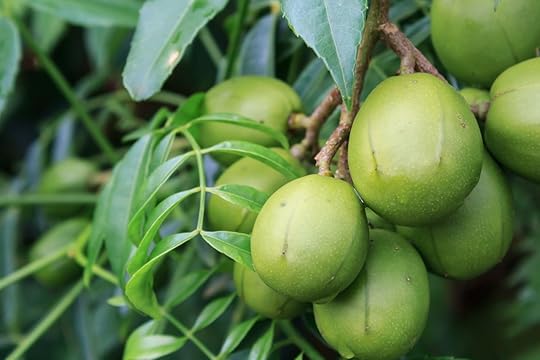
Photo: TexBr/Shutterstock
This tart, crunchy fruit goes by many names: June plum in Jamaica, ambarella in Sri Lanka, kedondong in Indonesia, jobo indio in Venezuela, frisiter in the Seychelles, and still others across tropical Africa, Asia, and the Americas. Similar to unripe mangoes, the fruit is hard and tangy, making it a nice addition to soups and stews, jams and preserves, sauces, and more. Mature leaves can be added to salad greens, and they can be used as a sour kick in seasonings when they’re young.
Where to buy it: Tropical Importers
3. Mamey sapote
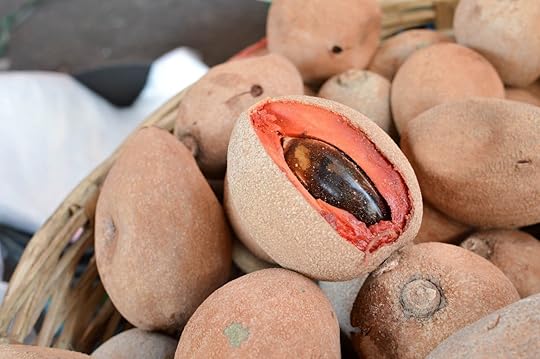
Photo: Svetlana Bykova/Shutterstock
Mamey sapote looks a bit like a coconut from the outside and a papaya on the inside. Unlike either, it has a large black seed in the center that’s said to have hallucinogenic properties when boiled. Native to Central America and Cuba, mamey sapote straddles the sweet-savory line, with some comparing it to pumpkin pie. Others note hints of cantaloupe, honey, and almond. Often used in edible products like fruit bars and smoothies, mamey sapote oil is also commonly added to beauty products.
Where to buy it: Tropical Importers
4. Longan
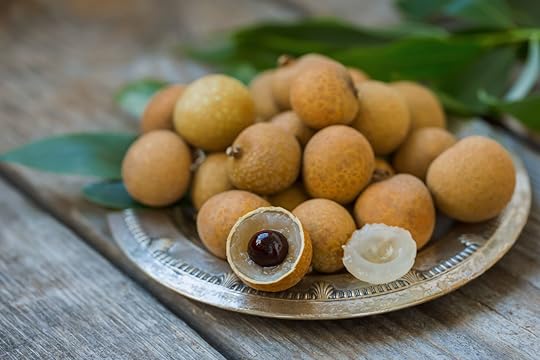
Photo: Bogachyova Arina/Shutterstock
Longan is a relative of lychee and rambutan, all of which grow around China, India, and Southeast Asia. Like both, it has translucent white flesh that resembles a peeled grape beneath its tough tan outside layer. Longan is the tartest of the three fruits and the least juicy.
Where to buy it: Ecoripe Tropicals
5. Canistel

Photo: Thunchit Wonghong/Shutterstock
Canistel is native to southern Mexico and much of Central America, though it’s been successfully cultivated in South Asia, the Caribbean, Brazil, Nigeria, Australia, and even southern Florida. Size and shape vary greatly, with some cultivars round like oranges and others teardrop-shaped. Beneath the yellow-orange, slightly waxy skin, the flesh is sweet and soft like custard. Sometimes called eggfruit, canistel is often used to make juices, jams, sauces, sweets, and a thick beverage called “eggfruit nog.”
Where to buy it: Tropical Importers
6. Sapodilla

Photo: Regreto/Shutterstock
A malty, saccharine fruit, sapodilla has been compared to poached pear, both in texture and sweetness. The fruit is native to southern Mexico, Central America, and the Caribbean. The nam name sapodilla traces back to the Nahuatl word used to describe small, edible fruits: tzapotl. Since the Spanish introduced the fruit to the Philippines, where it’s called chico, sapodilla is also grown throughout South Asia.
Where to buy it: Tropical Importers
7. Soursop

Photo: Kondoruk/Shutterstock
Soursop is relative of cherimoya that looks similar but tastes tarter than its tropical cousin, like pineapples mixed with under-ripe berries. It’s native to the Caribbean and Central America, known as guanábana or guyabano in Spanish, but it’s also cultivated in South America, Southeast Asia, and select parts of Africa. Soursop is rumored to have cancer-curing properties, a claim that’s been disavowed by experts.
Where to buy it: Tropical Importers 

More like this: The 9 weirdest fruits in the world and where to try them
The post The only way to taste these rare fruits in the US is Amazon or Etsy appeared first on Matador Network.

British Airways pilot strike

This week, British Airways pilots went on strike for the first time in the airline’s history, leading to the cancellation of nearly all flights scheduled for Monday and Tuesday. The strike, caused by a pay dispute between pilots and the airline, has affected the travel plans of nearly 200,000 passengers.
In preparation for the strike, British Airways contacted passengers and offered refunds or flights at a later date or with other airlines, but the industrial action is still likely to disrupt many travel arrangements, and getting through to the airline’s busy customer service centers won’t be easy.
According to CNN, since the strike began, fares on other airlines have risen astronomically — by up to 2,100 percent — due to increased demand.
The 48-hour strike is scheduled to end at midnight tonight. British Airways has announced that some disruptions may continue throughout Wednesday. Pilots will strike again on September 27 if the dispute isn’t resolved before then. You can check online to see if your flight has been canceled. 

More like this: 7 rights all air passengers have and should know about
The post British Airways pilot strike strands nearly 200,000 passengers appeared first on Matador Network.

Best hair care products for surfers

Surfers, SUPers, swimmers, and divers spend many hours in the saltwater and sun — often rendering their wildly luscious locks thirsty and brittle. While many surfers would rather swap a full day at the salon for a brine bath in the ocean, it’s a good idea to spend some time nurturing your head of sunkissed waves. Best practices to cultivate, or keep, silky tresses include a wash in freshwater quickly after getting out from a session. This ensures the salt doesn’t remain in your hair and dry out the ends even further. It’s a simple tip, but for those who love to go from the barrels to the bar — rocking that sea-soaked beachy look, it’s a mindful adjustment.
Another sneaky tip is rubbing coconut oil or an organic, reef-safe conditioner, mid-length to ends, before heading out. It’ll seem a tad strange at first, but make it a ritual as habitual as putting sunscreen on. Providing a barrier between the salt and your hair helps retain its natural moisture. Additionally, try to brush regularly, wear a hat when paddleboarding to prevent excess UV damage, and avoid thick elastics to tie your hair back when surfing (wear hair down or in braids to avoid tearing in the whitewash). And if nothing else, indulge in these hair care products for a way to revitalize those crispy curls into a mermaid-envy mane.
1. ELEVEN Miracle Hair Treatment ($25)

Photo: Eleven Australia/Facebook
An all-in-one treatment with 11 key benefits, this Australian-made miracle worker adds strength and shine while fighting against dreaded straw hair. Locks are lifted with Australian desert lime, peach, wattle seed, and silk amino acids to help unruly, coarse, or fragile hair become super silky and soft again. Aussies know how to get that carefree, beachy hair better than anyone.
2. OUAI Air Dry Foam ($28)

Photo: OUAI Haircare/Facebook
The Air Dry Foam is revolutionary for the low-maintenance people who prefer to let their hair air-dry from the shower. The innovative “wash and wear” formula not only encourages but enhances your natural wave patterns for more consistency, softened strands, and defined non-frizzy tresses. After one to three pumps, scrunch it into towel-dried hair, and let it do its thing. Added bonus: It’s infused with kale extract and carrot protein to add touchable texture when running your fingers through.
3. Innersense Sweet Spirit Leave In Conditioner ($26)
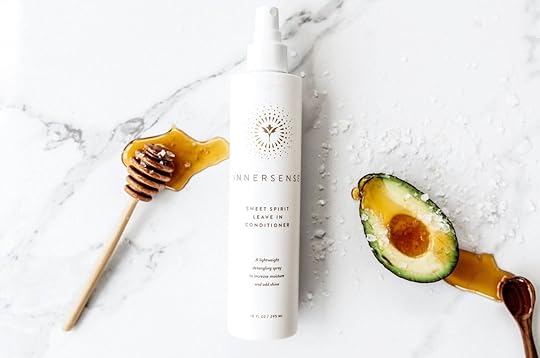
Photo: Innersense Organic Beauty/Facebook
The holy grail of leave-in conditioners, Innersense’s essential spray is a dream when detangling after a day in the water. Packing a punch with emollient oils, herbs, flower essences, and a touch of bee-friendly honey to maintain body and manageability, Sweet Spirit boosts hydration for extremely healthy hair. The lavender, rosemary, and eucalyptus add an aromatic, healing fragrance, while the certified organic plant extracts leave hair free flowing sans evil frizz.
4. Organic Blue Coconut Oil ($13)
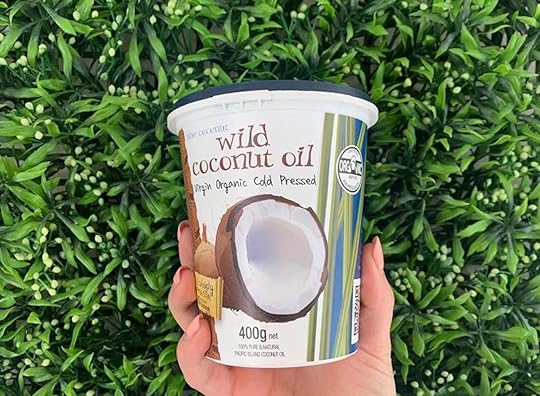
Photo: Blue Coconut/Facebook
Coconut oil is the richest natural source of medium chain fatty acids. The vitamins and natural fats nourish hair and penetrate it deeper and faster than most conditioners. Blue Coconut is all-natural and 100 percent pure — cold pressed in the Pacific Islands, then brought to New Zealand where it undergoes minimal mechanical refining, involving only heat and absorptive clay filters. Put a teaspoon-sized amount on mid-length and densely on the tips as a daily, or weekly, hair mask.
5. dpHUE ACV Hair Rinse ($35)

Photo: DpHUE/Facebook
This hair rinse is a killer alternative to traditional shampoo. Use weekly, after playing in the surf to gently cleanse and remove impurities without stripping color or the natural oils that are essential to the health of your scalp. The argan oil seals the hair’s cuticle to increase shine, while the aloe vera soothes the scalp and the apple cider vinegar rebalances pH to reduce frizz and triple the strength of hair.
6. Briogeo Don’t Despair, Repair! Hair Cap System ($36)

Photo: Briogeo/Facebook
This is a two-part deep conditioning system for those with dry, damaged hair — combining Don’t Despair, Repair! deep conditioning mask with a turbo-charged repair essence to provide concentrated repair. The cap system locks in moisture to open the hair cuticle so that the repairing nutrients of the mask and essence can provide a deeper level of moisture rescue. Meanwhile, the cute bath cap contains an inner fabric lined with natural reparative micro-oil beads that mend damage and enhance the resiliency of the hair.
7. Bumble and Bumble Surf Styling Leave In ($29)

Photo: Bumble and Bumble
Aprés surf, get that beloved beach look without sandy, salty grit. This UV-protective leave-in gel-cream styler creates soft tumbling waves and resists humidity with a blend of red seaweed, aloe leaf juice, kelp extract, coconut fruit, and algae extract. The light hold and flexibility enables you to style and restyle throughout the day.
8. Oribe Gold Lust Transformative Masque ($66)

Photo: Oribe
A tech-savvy remedy, Gold Lust may be a bit more pricey, but worth every penny. It penetrates the cuticle to rebuild each fiber. Oribe’s signature Bio-Restorative Complex includes plant collagen, caffeine, biotin, and niacinamide to improve elasticity and rejuvenate hair follicles. Saturate from root to ends, and notice how the curative white tea, baobab oil, and jasmine extract fortify hair body back to its glory days. 

More like this: The best natural beauty essentials you’ll ever need on your travels
The post The best hair care for saltwater fiends appeared first on Matador Network.

What is white fish?
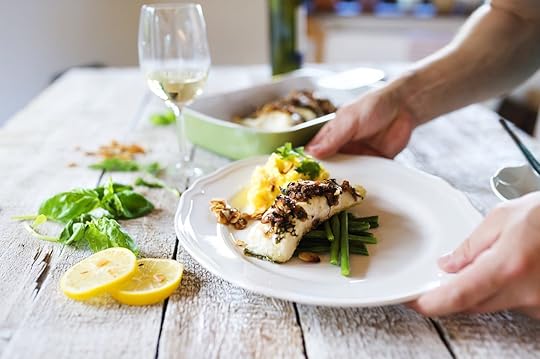
White fish: It sounds boring. Bland. It’s the overlooked cousin of rich tuna and oily salmon. It’s true that the flavor of white fish — Atlantic cod, haddock, hake, halibut, flounder, and sole to name a few — is mild, the flesh colorless and dry. No matter where you travel, you’re likely to encounter white fish on the menu (whether or not the type of white fish is listed is another matter). Case in point: It’s the basis for the beloved fish and chips.
White fish come in two varieties. There are round ones, like cod and sea bass, which look like your garden variety fish, and flat, which has a much stranger look. Flat fish, like halibut, flounder, and sole, are what they sound like: a flat-shaped fish with eyes on one side of the head that swim sideways and hunt on the ocean floor, usually by hiding in the sand. Though flat fish aren’t exactly glamorous creatures, they are longtime inhabitants of both the restaurant and the home kitchen.
These are the five most popular white fish you’ll see when traveling and wandering the grocery store aisles.
Halibut
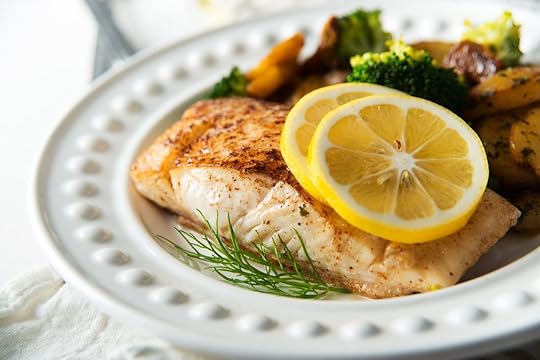
Photo: Anna Hoychuk/Shutterstock
Halibut is ubiquitous on restaurant menus. It’s the oiliest of the white fish, meaning its flesh is infused with super healthy omega-3 fatty acids, and it’s protein packed, too. Most Pacific halibut reside in Alaskan waters, but can also be from around Southern California and off the coasts of Japan and Russia. Atlantic halibut, which can be found in the waters near Canada and Greenland, is severely endangered and rarely commercially fished, though it sometimes accidentally picked up as bycatch. Any halibut that you see in the grocery store is of the Pacific variety.
Halibut frequently appears in the mythology of the indigenous peoples of the Pacific Northwest as a sign of prosperity. Today, halibut is still enjoyed throughout the continent: It’s the perfect canvas for fresh, crisp, herbaceous flavors like lemon, tarragon, coriander, fennel, and rosemary, and the filets are typically pan seared or grilled.
Halibut is also centerpiece of Norwegian culture. This famous seafaring society renowned for its fishermen is sometimes called the “kingdom of the halibut.” The premier place to fish for halibut in Norway is Havøysund, where halibut sometimes grow to as many as 170 pounds. Championship halibut fishing contests are sometimes held in Havøysund, but Nordic halibut are a vulnerable species and Norway is a leader in creating viable varieties of farmed halibut.
There are more measures underway to protect halibut. Just this year, the United States and Canada agreed on catch limits for wild halibut to help maintain the survival of the species. However, fish are so central to the diet, culture, and economy of North America’s indigneous peoples that in Canada, their right to fish according to their own laws is constitutionally protected.
Cod
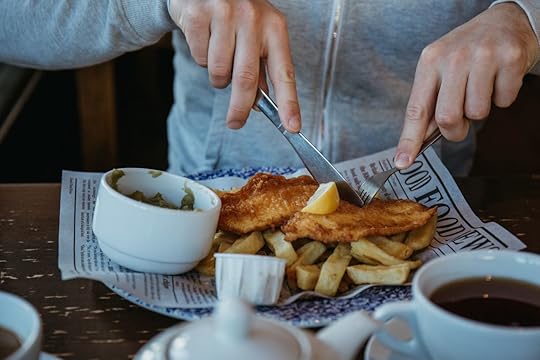
Photo: Alena Veasey/Shutterstock
Cod, while rich in protein, is slightly drier than halibut, though it does contain the antioxidant selenium. Health benefits aside, cod is one of the most sustainable seafood options. Cod stocks are in no danger of being overfished because they are managed by a system that limits catch size. Pacific cod mostly come from the Bering Sea and Gulf of Alaska, while Atlantic cod can be found all the way from Greenland, to North Carolina, to the Gulf of Maine.
Cod truly provides worldwide sustenance. It’s a central element of the cuisine in the oceanside Netherlands, both in a popular street snack called kibbeling (chunks of battered and fried cod) and lekkerbekje, deep fried filets of cod — essentially the Dutch version of fish and chips.
The seafaring Scandavian people of Sweden, Norway, and Finland favor lutefisk: cod dried on open air racks, soaked in lye and cold water for about two weeks until it achieves a gelatinous texture, and then served steamed. It’s especially popular during the Christmas season.
The United Kingdom is the third largest importer of cod in the world in order to supply its fish and chips obsession. In fact, white fish is the most widely consumed fish in the country (a similar white fish called haddock is sometimes substituted for cod).
The appeal of cod might be in its versatility. It can be served in chunks in a creamy chowder, roasted alongside vegetables, seared, poached, or fried into fish sticks.
Sole
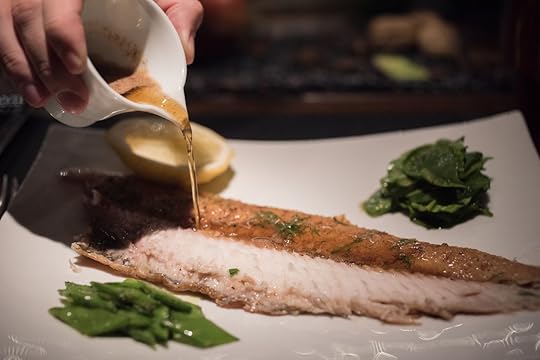
Photo: Thornteechach Thanutsupar/Shutterstock
Though there are many types of sole, Dover is the most common, widely available, and most highly prized. You won’t find it in American waters; it resides mostly in the Mediterranean and the North Sea, making it a staple of European cuisine in particular. It takes its name from the English seaport that raked in the most sole in 19th century.
Dover sole may look like a humble flatfish, with its spotty, drab brown skin, but it’s sometimes called “royalty” among fish — and the menu prices reflect that. It might be worth the price to seafood connoisseurs: Dover sole doesn’t taste or smell “fishy” once it’s cooked, and the flavor holds up so well on its own that most recipes recommend cooking it as simply as you can without too many overpowering herbs. In North America, you’ll typically find Dover sole on restaurant menus imported from England, though some specialty grocery stores will carry it for about $30 per pound.
Though hard to capture exactly how Dover sole tastes if you haven’t tried it, the flavor is often described as delicate, both mild and sweet, with a firm flesh that holds heavy sauces well. Dover sole is easy to filet, and the flesh doesn’t flake or fall apart when its stuffed — another reason it’s in high favor among chefs.
Julia Child loved Dover sole. According to The New York Times, the simple recipe for sole meunière, pan-fried sole flavored with butter, lemon, and parsley, made her “fall in love with French cuisine.”
Flounder

Photo: Natalia Ruedisueli/Shutterstock
Flounder reside all over the northern Atlantic and Pacific oceans. The popular yellowtail flounder is a native of the Atlantic coast. The summer flounder, also known as fluke, can also be found on the East Coast of the US, from North Carolina to Massachusetts. Though sole and flounder are often grouped together, especially outside Europe, they are actually different fish.
Flounder is also a staple food in Asia, where it’s consumed in Japan, Korea, and China. In Japan, flounder and fluke are popular as sashimi, while in China flounder is served whole or filleted, and either steamed or fried, and seasoned with ginger and garlic. In Korea, breaded and pan-fried white fish is called saeng sun jun, typically prepared using flounder, cod, or sometimes another white fish called hake.
You can find frozen flounder filets at just about every grocery store in America, but be wary: Flounder, like many other members of the white fish family, have a delicate flavor and flaky flesh that typically needs a little boost in the flavor department.
You can go the tried-and-true route and bake it with lemon juice, garlic, and a generous quantity of salt, or crusted in parmesan and panko crumbs. A simple pan sear accompanied by tarragon and cayenne is a slightly more adventurous way to dress up this humble fish.
Sea bass

Photo: Somkiat Insawa/Shutterstock
Sea bass are native to western Atlantic waters between Florida and Cape Cod. North American sea bass, sometimes also known as black sea bass (so named for the color of its scales) is a sustainable fish as its stocks are not in danger of being overfished.
Bass can also be found off the southern and western coasts of Europe, but where you won’t find sea bass is in Chile. Chilean sea bass, though you may have seen it pop up on the occasional restaurant menu, is a misnomer — this fish is actually an unrelated species called Patagonian toothfish.
Black sea bass is small fish with mild-flavored flesh, so it tends to be served whole. Sea bass is considered good eating; its meat is sometimes described as both tender and moist, suitable for grilling, frying, and baking. Like most other white fish, sea bass pairs well with the pungent flavors of garlic, tangy lemon, and salty capers. The skin, when fried to a crisp, is also a tasty treat.
Sea bass is also a popular ingredient in Chinese cooking. In Cantonese cuisine, sea bass is steamed in a bamboo steamer (though it can be done on the stove) with a variety of seasonings, including ginger, shallots, scallions, and soy sauce. 

More like this: Your guide to the 14 best oyster regions in the US
The post White fish is everywhere you travel. Here’s what it really is and why you should order it. appeared first on Matador Network.

Hawaii less traveled: 4-island guide
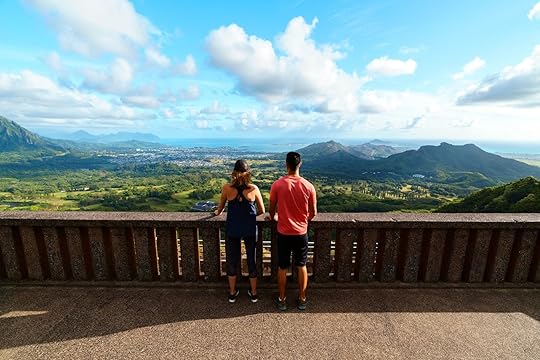
Hawaii less traveled:
Experience a different side of the islands
Island of Hawaii
Maui
Oahu
Kauai
Photo: Hawaii Tourism Authority/Blake Bronstad
#wedge-0 { background-image: url('https://d36tnp772eyphs.cloudfront.net...') }@media(min-width:560px){ #wedge-0 { background-image: url('https://d36tnp772eyphs.cloudfront.net...') } }@media(min-width:1200px){ #wedge-0 { background-image: url('https://d36tnp772eyphs.cloudfront.net...') } }
Scientists may feud over exactly how many climate zones are contained within Hawaii’s boundaries, but they’ve all concluded that it’s a lot. The state is one of the most ecologically diverse places on the planet, where you can find volcanic peaks, lush rainforests, and white and black sand beaches all within a day’s drive.
Hike through jungle terrain, creep through dark lava tubes, dive and snorkel above coral reefs, or paddle along sheer cliff coastlines. When you’re tired, plop under the shade of a palm tree, learn about Hawaiian history and culture through dance and song, or sit down to a cup of locally grown organic coffee. Clearly, this is a place worth protecting.
Below, we’ve put together some ideas of lesser-known, eco-friendly things to do on the four main islands of Hawaii. If you’re ready to explore all the different sides of the Aloha State, with respect and with an open mind, this one’s for you.

This post is proudly produced in partnership with The Hawaiian Islands.
Island of Hawaii
Photo: Hawaii Tourism Authority/Tommy Lundberg
At over 4,000 square miles, the island of Hawaii is more than four times larger than any other island in the chain. Here, the sand ranges from white to black (with a gamut of colors in between) and volcanoes dominate the landscape. With so much area, there’s plenty to explore — here’s a start.
Getting a geology lesson in volcano country
The island of Hawaii is still being formed...
Visit
Getting a geology lesson in volcano country
The island of Hawaii is still being formed, with the most recent eruption creating about 875 new acres of land along the coastline in Puna. Head down Highway 130 toward MacKenzie State Recreation Area (where the woods abut the rocky shoreline for some great photo opps), and you'll see some of the hardened lava where it came to rest.
Venture on to the current end of the road to check out the newest black sand beach at Pohoiki Beach. Here you'll also see another part of the flow, which stopped inches from certain picnic tables while claiming others.
Photo: Hawaii Tourism Authority/Tor Johnson
The island of Hawaii’s intriguing past is on display...
Taking in Hawaiian history and culture
Visit
Taking in Hawaiian history and culture
The island of Hawaii’s intriguing past is on display at Puuhonua o Honaunau National Historical Park, which according to local tradition was a place of refuge. Until the late 1800s, those who broke kapu, or sacred laws, would evade punishment so long as they could make it to the site of Puuhonua o Honaunau.
Wooden sculptures of deities, called kii, protect the grounds, and the site regularly hosts educational events to help visitors learn more about the history of forgiveness.
Photo: Hawaii Tourism Authority/Tor Johnson
From tip to tip, a manta ray’s wingspan can top 12 feet...
Diving (with or without a tank)
Visit
Diving (with or without a tank)
From tip to tip, a manta ray’s wingspan can top 12 feet. They're gentle giants who feed primarily on tiny plankton—and they're just one of the many incredible marine species you might spot off Kona’s shores. Kona Honu Divers, a Manta Ray GreenList activity provider, can lead the way.
If you want to explore the sea on just one breath, enroll in a course with Kona Freedivers. Many freedivers claim that animals tend to swim closer to you when you’re not sporting a snorkel or scuba apparatus, thanks to the lack of bubbles—whether that’s true may be something worth finding out for yourself.
Photo: Island of Hawaii Visitors Bureau/Kawika Singson
Head to the island of Hawaii’s northeast, where the jungles are rife with waterfalls...
Falling for waterfalls
Visit
Falling for waterfalls
Head to the island of Hawaii’s northeast, where the weather is wetter and the jungles are rife with waterfalls. Akaka Falls, Peepee Falls, Umauma Falls, and Waianuenue Falls (Rainbow Falls) are some of the best. Just make sure to ask around regarding how to access the falls safely and to ensure you don't trespass on private property.
Tip: Not far from bayfront in Downtown Hilo, Rainbow Falls gets its name from the occasional rainbow that its water creates.
Photo: Hawaii Tourism Authority/Tor Johnson
Maui
Photo: Hawaii Tourism Authority/Tor Johnson
Humpback whales are part-time residents off the north coast of Maui . Though marine biologists say this is because of its shallow waters, the striking views of the island’s volcanic landscape can’t hurt. Come see what else the Valley Isle has to offer.
Seeing stars, galaxies, and the Milky Way
Yes, as a rule, national parks are best explored in daylight. BUT...
Visit
Seeing stars, galaxies, and the Milky Way
Yes, as a rule, national parks are best explored in daylight. And yes, Haleakala National Park is a stunner during the golden hours of sunrise and sunset (note that you'll need a reservation for the former). But once night falls, the massive volcano at the center of the park looks as though it's sleeping under a blanket of stars. "Half the park is after dark," as they say.
Maui Stargazing offers guided night tours at Haleakala, including use of a Dobsonian telescope. Peer up at galaxies with a hot cup of cocoa in hand, an experience you likely never expected to have in Hawaii.
Photo: Shutterstock/Heartwood Films
This was once the primary form of water transport among the Pacific Islands...
Outrigger canoeing
Visit
Outrigger canoeing
Outrigger canoeing was once the primary form of water transport among the Pacific Islands—stars, currents, and the ocean’s behavior guided Pacific Islanders across treacherous seas. Try your hand at paddling a six-person outrigger canoe on an eco-tour with Hawaiian Paddle Sports and learn more about the incredible Polynesian migration.
From December to March, you can whale watch from your outrigger canoe. No engine hum, no crowds, just you and the denizens of the Pacific.
Photo: Hawaii Tourism Authority/Tor Johnson
Leave the piña coladas back at the beach bar and sip on a glass of pineapple wine...
Tasting Hawaiian beer, wine, and spirits
Visit
Tasting Hawaiian beer, wine, and spirits
Leave the piña coladas back at the beach bar and sip on a glass of pineapple wine at the vineyards of MauiWine, Hawaii’s largest winery. It tastes better than you can imagine. (They have tours, too.)
If you’re more of a beer drinker, head to Maui Brewing Company. Love vodka or rum? You’ll find your people at Hawaii Sea Spirits’ organic distillery. Sampling tasty goodness, supporting local—two birds, one stone.
Photo: Hawaii Tourism Authority/Heather Goodman
Many luau in Hawaii have taken an anything-goes approach to this cultural party...
Partaking in a traditional luau
Visit
Partaking in a traditional luau
Many luau in Hawaii have taken an anything-goes approach to this cultural party and feast, resulting in a mishmash of influences and an inauthentic experience. The food, dance, and music you experience at the average event may not be reflective of what a luau looked like back before the days of mass tourism.
At the Old Lahaina Luau, on the other hand, you'll witness traditional dance and dine on local cuisine with the ocean grandstanding as a backdrop. Nothing mishmashed about it.
Photo: Hawaii Tourism Authority/John Hook
Oahu
Photo: Hawaii Tourism Authority/Tor Johnson
Hang out in Honolulu for a while to take in its arts and culture scene. Then, escape city life for one-of-a-kind views, postcard beaches, and maybe even a shot at catching a wave all to yourself. There are plenty of sides to Oahu that you won’t see in the standard travel guides.
Surfing has long been a part of Hawaiian culture...
Surfing the waves
Visit
Surfing the waves
Surfing has long been a part of Hawaiian culture. The royalty of the islands, or alii, were often skilled surfers themselves and rewarded those who surfed beautifully with boards carved from koa trees.
Beginners can learn to surf in the calm waves of White Plains Beach—it’s mellow all year long—and then head to Oahu’s world-renowned North Shore to see the experts try their luck at Banzai Pipeline, an iconic wave that guillotines down the shoreline.
Photo: Hawaii Tourism Authority/Tor Johnson
Amidst the souvenir shops of Honolulu, art and culture are hiding in plain sight...
Scoping out culture in Honolulu
Visit
Scoping out culture in Honolulu
Amidst the souvenir shops and other local businesses of Honolulu, art and history are hiding in plain sight. For a full day of exploration, start at the Honolulu Museum of Art, which houses over 50,000 works with a focus on Asia and the Pan-Pacific. The Hawaiian Mission Houses, Hawaii State Art Museum, Hawaii Theatre Center, Kumu Kahua Theatre, and Contemporary Arts Museum are all within a mile’s walk of one another.
Outside of the city center, near Diamond Head, gaze at Doris Duke’s opulent souvenirs collected from India and the Middle East at the Shangri La Museum of Islamic Art, Culture & Design.
Photo: Hawaii Tourism Authority/Daeja Fallas
If you visit Oahu without spending a day at the beach...
Beach hopping the North Shore
Visit
Beach hopping the North Shore
If you visit Oahu without spending a day at the beach, were you ever there at all? Sunset Beach, Waimea Bay, Mokuleia Beach, Velzyland Beach, and Kaena Point are all worth a stop on Oahu's North Shore, a full stop, away from the hustle and bustle of the city.
Note: Take extra care during turtle nesting season (May to October, generally), when your presence can disturb the nesting sites. And if access is restricted at your chosen beach, don’t worry—there are plenty more just down the road.
Photo: Hawaii Tourism Authority/Tor Johnson
Whether your taste is the steep and strenuous or the paved and mellow...
Hiking to lighthouses and craters
Visit
Hiking to lighthouses and craters
Whether your taste is the steep and strenuous or the paved and mellow, there’s no shortage of hiking trails in Oahu. The Makapuu Lighthouse Trail is well-kept and overlooks Oahu’s southeastern coastline, a prime spot for spying migrating whales. In Kualoa Regional Park, you can paddle to Mokolii, a tiny basaltic island, and walk 20 minutes to its top.
Another easy hike can be found in Waimea Valley, complete with picturesque waterfall. Or, to learn more about the native plant and wildlife of Oahu, follow the lead of a local guide, who can show you the beauty of places like Mt. Leahi (Diamond Head).
Photo: Hawaii Tourism Authority/Tor Johnson
Kauai
Photo: Hawaii Tourism Authority/Tor Johnson
Kauai is known as the Garden Island for good reason. It’s a knockout with cinematic landscapes, some of the best hiking trails in the world, spacious beaches, and plenty of farms where you can get up close and personal with the freshest flavors of Hawaii.
Napali Coast State Wilderness Park is where sheer cliffs drop straight into the ocean...
Exploring the epic Napali Coast on Kauai’s north shore
Visit
Exploring the epic Napali Coast on Kauai’s north shore
Napali Coast State Wilderness Park is located on the north shore of the Garden Island, where sheer cliffs (pali in Hawaiian) drop straight into the ocean in some of the most dramatic coastline terrain anywhere. The best views are found by sea or air. Boat tours leave from Port Allen, while guided kayaking trips bring you up close to soaring cathedral cliffs. Aerial tours, most lifting off from Lihue Airport, give you a front-row seat to scenic areas that are largely inaccessible by land or water. This includes the majestic Manawaiopuna Falls, which you might recognize from Jurassic Park.
Note: New rules and daily visitor limits have been set and entering the north shore of Kauai—which includes Haena State Park and the popular attractions of the Kalalau Trail, Hanakapiai Falls, and Kee Beach—requires reservations in advance. You can secure these online at gohaena.com.
Photo: Hawaii Tourism Authority/Tor Johnson
Throw your camera into your beach bag...
Relaxing on Poipu Beach
Visit
Relaxing on Poipu Beach
Throw your camera into your bag before heading to Poipu Beach Park, a perfectly crescent-shaped stretch of sand lined with palm trees and crystal clear waters. There are plenty of family-friendly swimming and snorkel spots, in addition to the spacious beach to stroll along and snap that postcard shot.
You might want to pack your binoculars too—from November to March, humpback whales flip and frolic in the distance.
Photo: Hawaii Tourism Authority/Tor Johnson
The harvests of Hawaii’s Garden Island are easily found on a Kauai farm tour...
Going on a farm tour
Visit
Going on a farm tour
The harvests of Hawaii’s Garden Island are easily found on its farm tours. Learn how taro, also called kalo, is cultivated, and sip on fresh fruit smoothies at Hanalei Taro & Juice Company.
Lihue Farm Food Tour’s "Tasting Kauai," Kauai Coffee Company, and Lydgate Farms are three experiences that won’t let you leave with an empty stomach. For these, it’s recommended to come a bit hungry.
Photo: Hawaii Tourism Authority/Heather Goodman
Kauai lost some of its natural habitat to...
Exploring a backcountry playground
Visit
Exploring a backcountry playground
Kauai lost some of its natural habitat to large-scale sugar plantations starting in the mid-1850s. Today, eco-tourism companies are helping to rehabilitate these lands, turning the old sugar plantations into outdoor playgrounds in the process.
At Kauai Backcountry Adventures, you can float on an inner tube down the plantation’s former irrigation system or get a view of the area from high above, courtesy of a 7-line zipline course.
Photo: Hawaii Tourism Authority/Tor Johnson

This post is proudly produced in partnership with The Hawaiian Islands.
The post Hawaii less traveled: Experience a different side of the islands appeared first on Matador Network.

September 9, 2019
2019 UNESCO World Heritage sites

Every year, UNESCO adds properties of amazing cultural and natural significance to its list of heritage sites, which are legally protected from destruction or use during wartime through international treaties. Currently, there are 1,121 World Heritage sites scattered throughout the world, including the historic Acropolis in Greece, India’s dazzling Taj Mahal, and Australia’s Great Barrier Reef. This year saw the addition of 29 new sites to the UNESCO list, ranging from prehistoric Polish mines to Japanese burial mounds, and they are all worth planning a trip around.
1. Bagan
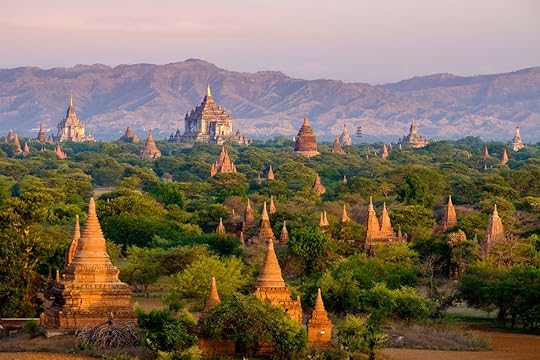
Photo: Martin M303/Shutterstock
Bagan is an archeological site in central Myanmar, located along a curve in the Ayeyarwady River. Between the ninth and 13th centuries, Bagan was the capital of the Pagan Kingdom, which was the first kingdom that unified the regions that now form present-day Myanmar. As a World Heritage site, Bagan contains an impressive assortment of Buddhist art and architecture. Within the city, there are numerous temples, stupas, monasteries, places of pilgrimage, archaeological remains, frescoes, and sculptures. Bagan’s collection of monumental architecture reflects the influence and power of religion within an early Buddhist empire.
2. Ancient Ferrous Metallurgy Sites of Burkina Faso
This World Heritage site located in Burkina Faso is composed of five properties that are scattered throughout different provinces of the country. At these sites, visitors can view about 15 standing furnaces, as well as miscellaneous mines and ruins. If you visit, be sure to check out Douroula, Burkina Faso’s oldest metallurgy settlement from the eighth century BC. The metallurgy sites of Burkina Faso are important because they provide a record of West African society before the colonial invasion.
3. Churches of the Pskov School of Architecture

Photo: Zabotnova Inna/Shutterstock
The Churches of the Pskov School of Architecture are located in Pskov, a city that sits on the banks of the Velikaya River in northwest Russia. This World Heritage site is a series of religious monuments, churches, and cathedrals that are all productions of the Pskov School of Architecture, which thrived between the 12th and 17th century. The Pskov School is one of the most influential Russian Schools of architecture, known for its Byzantine elements, use of local construction materials, and minimalist attitude towards decoration.
4. Babylon
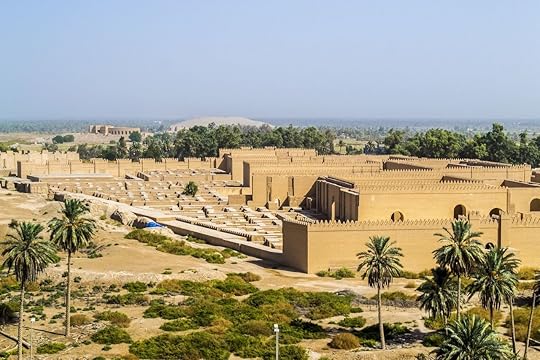
Photo: Qayssar Hussein/Shutterstock
Babylon is located in Iraq, about 60 miles south of Baghdad, the nation’s capital. Nearly everyone is familiar with the ancient city through religious writings, such as the Hebrew Bible (Christian Old Testament) and the Quran. This World Heritage site specifically includes villages and agricultural areas surrounding the ancient city, city walls, gates, ruins, palaces, and temples.
Babylon’s significance is self evident as it was the nucleus of one of the most influential empires of the ancient world. It is an exemplary testimonial to the height of neo-Babylonian culture: The city showcases the civilization’s creativity through its architecture, unique urban planning, and artistic details.
5. Budj Bim Cultural Landscape
The Budj Bim Cultural Landscape is in southeast Australia, within the land of the Gunditjmara Aboriginal people. If you visit Budj Bim, you can see the extensive aquaculture system that was used by the Gunditjmara people for nearly six thousand years. The network of channels, weirs, and dams was fashioned by the now-extinct Budj Bim lava flows and was initially manipulated by the Gunditjmara to catch kooyang (eel). This highly productive aquaculture system served as an economic and social center for the Gunditjmara culture, and it has contributed to the narrative of the Gunditjmara lineage — the Budj Bim cultural landscape is intrinsic to the group’s identity today.
6. Erzgebirge/Krušnohoří Mining Region

Photo: Joachim B/Shutterstock
The Erzgebirge/Krušnohoří (Ore Mountains) region sprawls across southeast Germany (Saxony) and northwest Czech Republic (Bohemia). This World Heritage site is notable because it has served as a distinctive mining site since the Middle Ages. Between 1460 and 1560, this region was the central source of silver ore for all of Europe. Later on, this mining practice expanded to include tin. By the end of the 1800s, the region had developed into a prime global supplier of uranium. The Erzgebirge/Krušnohoří region served as a nexus of technological and cultural advancement for nearly 800 years through the singular medium of metal.
7. Dilmun Burial Mounds
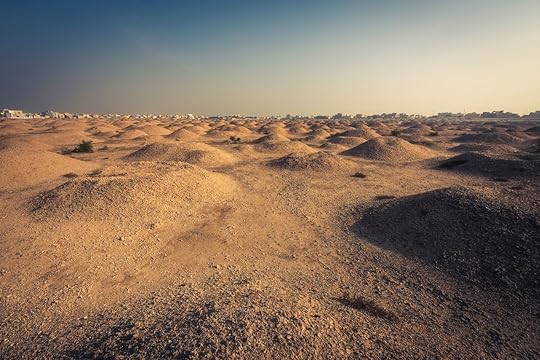
Photo: DEEPAK SUDHAKARAN/Shutterstock
The Dilmun Burial Mounds, built between 2050 and 1750 BC, are found in Bahrain, an island country in the Persian Gulf. There are about 11,774 burial mounds in total, which were originally modeled as low, cylindrical towers. The burial mounds are significant because they provide evidence of the Early Dilmun civilization, and they capture the time in which Bahrain was a trade hub for the countries encircling the Persian Gulf. In fact, it is the thriving economy of Dilmun that allowed the citizens to develop this elaborate burial tradition. The Dilmun Burial Mounds were democratically applied to the entire Dilmun population, and they are physically unique in their scale, arrangement, and decoration.
8. Historic Centre of Sheki

Photo: Ana Flasker/Shutterstock
The historic center of Sheki in Azerbaijan is characterized by a cluster of houses with high gabled roofs. The city’s architecture was influenced by Safavid, Qajar, and Russian styles, due to Sheki’s location along historic trade routes connecting the Middle and Far East. The historic center of Sheki is best known for the Khan Palace, which contains many ornate stained-glass and mosaic displays, as well as paintings. Additionally, Sheki is home to an assortment of wealthy merchant houses, reflecting the silkworm economic boom of the late 1700s-1800s.
9. Jaipur City

Photo: saiko3p/Shutterstock
The fortified city of Jaipur, located in Rajasthan, a northwestern Indian state, is unique because its urban planning reflects a blend of Western and Eastern philosophies. It is designed in a grid pattern (a Western tradition), yet populated by buildings that reflect Vedic architecture (an ancient Indian design philosophy characterized by cosmically influenced proportions and natural materials). Jaipur is also noted for its cohesive pink color scheme, which has afforded it the nickname “The Pink City.” If you visit Jaipur, be sure to check out the Hawa Mayal, an awe-inspiring pink structure with ornately patterned facades.
10. Jodrell Bank Observatory

Photo: Garry Basnett/Shutterstock
The Jodrell Bank Observatory is a structure of quiet significance in the field of radio astronomy. This scientific building is to be found in rural northwest England, a location with no radio interference. Founded in 1945, the Jodrell Bank Observatory is responsible for major advancements in our understanding of meteors and the moon, the discovery of quasars, quantum optics, and the tracking of spacecraft. The Jodrell Bank Observatory contains an exceptional range of technologies wherein visitors can physically observe the shift from traditional optical astronomy to radio astronomy (1940s-1960s). These scientific advancements are largely responsible for our understanding of the universe today.
11. Krzemionki Prehistoric Striped Flint Mining Region

Photo: Krzemionki/Facebook
Krzemionki contains a collection of mining sites within the mountain region of Świętokrzyskie, Poland. However, unlike the Erzgebirge/Krušnohoří Mining Region, the Krzemionki sites date back to the Neolithic and Bronze Ages (3900-1600 BC). Krzemionki is one of the world’s most elaborate prehistoric flint mining systems, with its underground mining structures, flint workshops, and about 4,000 shafts and pits. The prehistoric inhabitants of Krzemionki extracted and processed striped flint, which they then fashioned into axes for hunting, fighting, and lumber work. This World Heritage site is worth visiting if you want to learn more about life in prehistoric settlements and the importance of flint mining for tool production in the story of human evolution.
12. The Ceremonial Carriage Horse Breeding Grounds at Kladruby nad Labem

Photo: Národní Hřebčín Kladruby/Facebook
The Ceremonial Carriage Horse Breeding Grounds at Kladruby nad Labem in Czech Republic’s Elbe plain is an unusual UNESCO addition that is testament to the influence of the Austro-Hungarian Empire (specifically the Habsburgs). The Habsburg imperial court relied upon well-trained kladruber horses to pull carriages in both royal and military ceremonies. The grounds at Kladruby nad Labem have been in operation since 1579, and they still function today as one of Europe’s most prominent horse-breeding institutions. If you visit the property, you can tour fields, fenced pastures, sandy soils, a manicured forest, and buildings, all designed for the purpose of breeding and training kladruber horses.
13. The Prosecco Hills of Conegliano and Valdobbiadene
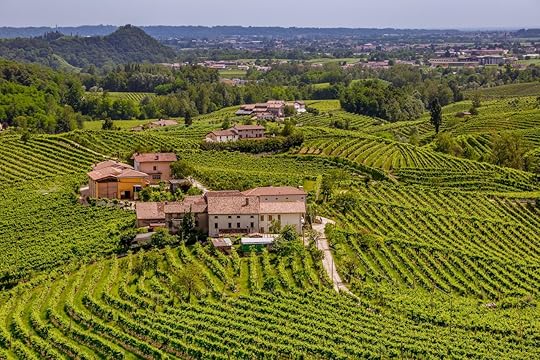
Photo: Pavel Rezac/Shutterstock
Located in the northeastern Italian province of Treviso, this property reflects the aesthetics and history of Prosecco wine production. The terrain is dominated by textured hills, ciglioni (clusters of grapevines on narrow terraces), forests, rustic villages, and farmland. Ciglioni have been used in the region since the 1600s, and they impose a manmade grid upon the landscape, with rows of vines running both parallel and perpendicular throughout the hills. In the 1800s, the Italians developed the bellussera technique of “training the vines,” which further adds to the collaboration of man and nature that is so unique to this space.
14. Megalithic Jar Sites in Xieng Khuang
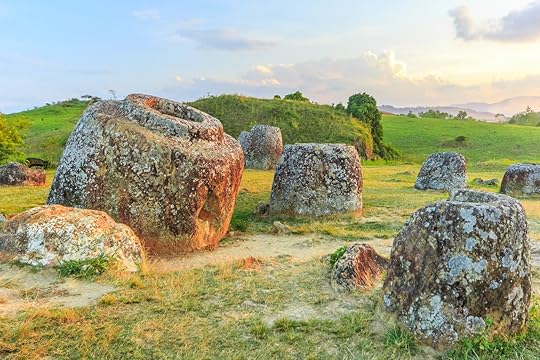
Photo: Avigator Fortuner/Shutterstock
Also called the Plain of Jars, this new UNESCO heritage site is located on a plateau in central Laos. The Plain of Jars contains more than 2,100 tube-like stone jars used for funerary practices in the Iron Age (500 BC-500 AD). The jars and related objects (including tombstones, quarries, and funerary artifacts) at this site are the only means archeologists and anthropologists have to study the Iron Age civilization, which disappeared around 500 CE.
15. Mozu-Furuichi Kofun Group
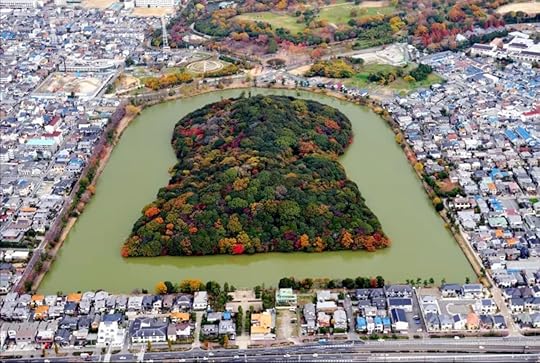
Photo: JNTO
This site consists of 49 kofun (“old mounds” in Japanese) located on a plateau above Japan’s Osaka Plain. The kofun are ancient burial mounds sculpted into elaborate shapes, such as keyholes or scallops, between 200 and 500 AD for members of the Kofun Period’s elite. During that time, members of the upper-class would be buried with a range of funerary objects, including weapons and armor. Additionally, the kofun were decorated with haniwa, or clay figures. There are nearly 160,000 kofun in Japan, but the Mozu-Furuichi group was selected by UNESCO because it contains an especially well-preserved level of artistic vision and execution.
16. Ombilin Coal Mining Heritage of Sawahlunto
The Ombilin mines, located in the Sumatra region of Indonesia, were originally built by the Netherlands’ colonial government in the late 1800s/early 1900s to extract, process, and move high-quality coal through an otherwise inaccessible terrain. The coal mining laborers were forced into labor by the Dutch from the local Indonesian population, with some add-ons from nearby penitentiaries. If you visit the Ombilin mines of Sawahlunto, you will witness a preserved fragment of colonization, as well as an innovative system devised for the removal and transport of coal. The property includes the mining sites, company town, coal storage facilities in nearby Emmahaven, and railroads used to transport coal to the coast.
17. Risco Caido and the Sacred Mountains of Gran Canaria
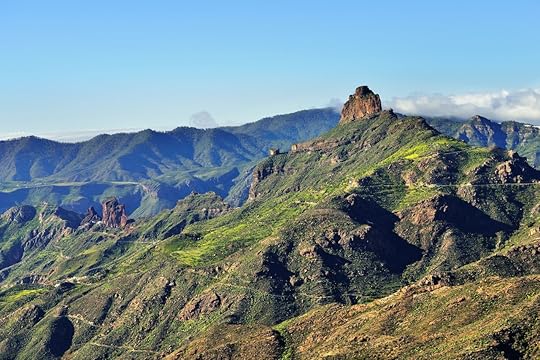
Photo: Oleg Znamenskiy/Shutterstock
The Sacred Mountains are an otherworldly landscape on the Spanish island of Gran Canaria. This site includes cliffs, ravines, and volcanic formations that twist into surprising forms. Aside from the naturally occurring phenomenon, this property contains a large number of settlements (habitats, cisterns, etc.) that testify to the existence of a pre-Hispanic culture on the island. The prehistoric structures also indicate an ancient, collective religion: There are two sacred temples, named Risco Caído and Roque Bentayga. Archeologists believe that seasonal ceremonies occurred within these temples, potentially in accordance with an astrological cult.
18. The Royal Building of Mafra

Photo: krivinis/Shutterstock
This imposing complex is found 20 miles northwest of Lisbon, Portugal. The Royal Building of Mafra — which includes a palace, basilica, convent, garden and hunting park — was built by King João V in 1711 to celebrate his power, as he was the first ruler to disregard Portuguese traditions and declare himself an absolute monarch. The Royal Mafra Building contains some incredible works of Italian Baroque art, commissioned by João V as he spared no expense in the outfitting of his palace.
19. Sanctuary of Bom Jesus do Monte in Braga

Photo: Rolf E. Staerk/Shutterstock
Another site in Portugal, the Sanctuary of Bom Jesus do Monte can be accessed by climbing the slopes of Mount Espinho (just outside of Braga). In the mid-1500s, the Catholic Church decided to commission various Sacre Monti, or “Sacred Mountains,” pilgrimage sites throughout Western Europe. These sites were meant to counteract the Protestant movement and reinforce the devotion of Catholics through spectacular, immersive artwork. Each Sacre Monti installation involved a physical ascent, in which pilgrims would navigate through a succession of biblical scenes that evoked the death and resurrection of Jesus.
The Bom Jesus ensemble is centered on a path, Via Crucis, that leads up the western slope of the mount. It includes a succession of chapels that house sculptures evoking the crucifixion, as well as fountains, sculptures, and gardens. The main attraction is a monumental Baroque stairway that climbs nearly 400 feet to the summit of the mountain, culminating in the spectacular Church of Bom Jesus do Monte.
20. Seowon in Korea

Photo: photo_jeongh/Shutterstock
In Korea, a seowon is a Neo-Confucian academy. They originated in the Joseon Dynasty, which ruled from 1400 to 1800 AD. This specific World Heritage site contains nine seowon that are scattered throughout central and southern parts of Korea. The seowon were specifically designed to foster the students’ learning, honoring of scholars, and interaction with the natural world. Seowon are typically located near mountains and water sources, therefore promoting meditative practices and the appreciation of nature. These open structures depict how the Chinese influence of Neo-Confucianism was modified to fit the local Korean culture.
21. The 20th-Century Architecture of Frank Lloyd Wright

Photo: Sean Pavone/Shutterstock
This property includes eight of famous American architect Frank Lloyd Wright’s buildings in the United States. Wright’s most famous works are on the list: Fallingwater (Pennsylvania), the Herbert and Katherine Jacobs House (Wisconsin), and the Guggenheim Museum (New York). Fallingwater is a particularly fabulous piece of architecture as it is literally built atop a waterfall. Wright designed the home so that inhabitants could hear but not see the waterfall from any point in the structure, claiming that a repetitive view of something so splendid would render it common. Wright’s architecture features a unique balance of geometry, minimalism, sophistication, and restraint.
22. Water Management System of Augsburg
Augsburg’s water management system, located in the Bavaria region of Germany, made the 2019 list of newly inscribed properties because it showcases a unique evolution of technologies that range from the 1300s to the present day. The system contains a network of canals, medieval water towers, pumps, valves, a water-cooled hall, and a still-functional system of three fountains and hydroelectric power stations. The world regards Augsburg as a pioneer in hydraulic engineering due to the intricacies and innovative systems within the city’s water management network.
23. Áísínai’pi

Photo: 2009fotofriends/Shutterstock
This park and its collection of hoodoos (pillars of rock intricately sculpted by erosion) is located in the province of Alberta on the border between Canada and the United States. The name of this World Heritage Site, Áísínai’pi, is a Blackfoot word that literally translates to “writing on stone.” The Blackfoots (Siksikáíítsitapi) etched and painted on the sandstone walls of the park as a means of recording messages from sacred beings. Today, the Áísínai’pi contains over 1,000 works of art. Some of these marks date between 4500 and 3500 BC. If you visit the Áísínai’pi, be aware that the land is sacred to the Blackfoot people, who continue to hold ceremonies at the location.
24. French Austral Lands and Seas
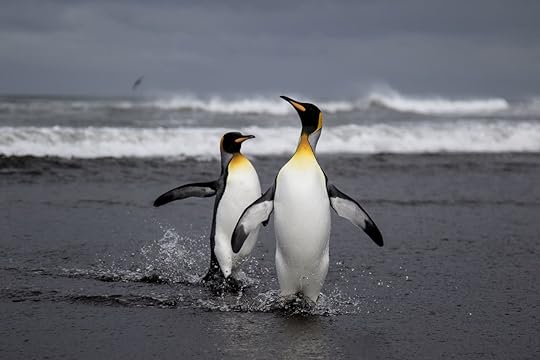
Photo: Etienne Pauthenet/Shutterstock
The French Austral Lands and Seas includes the Crozet Islands, Kerguelen Islands, the Saint-Paul and Amsterdam Islands, as well as dozens of sub-Arctic island, which are the largest islands in the southern Indian Ocean. This vast sanctuary is home to one of the world’s densest populations of birds and marine mammals. The islands of the French Austral Lands and Seas are extremely remote and are therefore untouched ecosystems that document biological evolution.
25. Hyrcanian forests
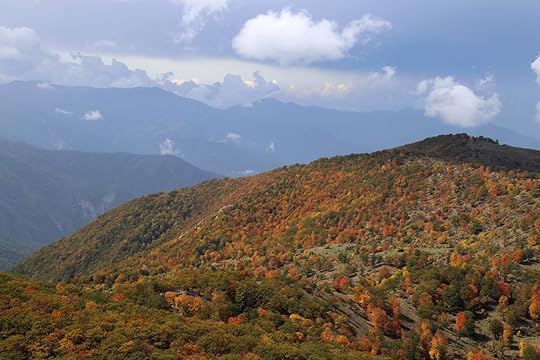
Photo: Ata Farzam/Shutterstock
The Hyrcanian forests found along the coast of the Caspian Sea in northern Iran date back over 25 million years. These forests contain a high range of biodiversity, with 180 recorded species of birds and 58 recorded mammal, such as Persian leopards, steppe eagles, and endangered wild goats.
26. Migratory Bird Sanctuaries along the Yellow Sea-Bohai Gulf of China

Photo: Butterfly Hunter/Shutterstock
This property is located in China, and it features the world’s largest intertidal mudflat system. Here, mudflats, marshes, and shoals are exceptionally fertile and serve as incubators for various species of fish and crustaceans. This property is unique because it is a gathering point for many bird species that use the East Asian-Australasian flyway. This is a migratory flight path used by nearly 55 bird species, connecting Russia, Alaska, East and Southeast Asia, and the Western Pacific (about 22 countries total). Some of the world’s most endangered species, including the spoon-billed sandpiper and the red-crowned crane, depend on this exact coastline to molt, rest, eat, or nest while pursuing their migratory routes.
27. Vatnajökull National Park
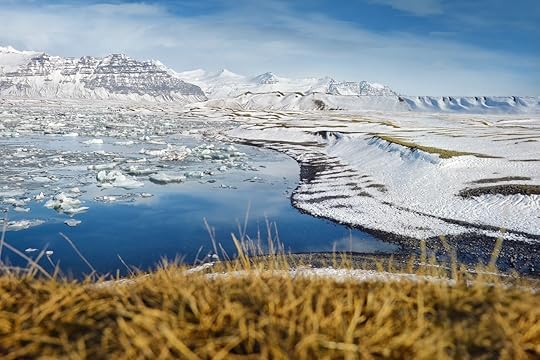
Photo: kovop58/Shutterstock
This site covers about 14 percent of the country of Iceland. This vast park system contains 10 volcanoes, eight of which are found beneath glaciers. The interplay between volcanoes (some of which are active) and glaciers results in numerous surprising, monumental forms.
28. Paraty and Ilha Grande
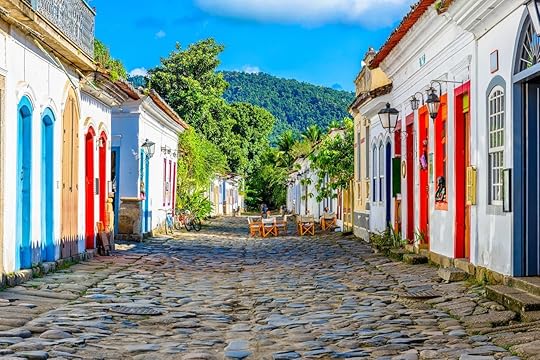
Photo: Catarina Belova/Shutterstock
This property is located in Brazil between the Serra da Bocaina mountain range and the Atlantic Ocean. The area was selected for its cultural merit because it contains Paraty, a well-preserved colonial town with many buildings from the 17th century. The natural features of this site include protected areas of the Brazilian Atlantic Forest, which is one of the world’s five biodiversity hotspots. Paraty is home to a diverse range of animals, including the jaguar and woolly spider monkey.
29. Archaeological Ruins of Liangzhu City
Located in the Yangtze River Basin on the southeastern coast of China, and dating between 3300 and 2300 BC, the ruins show a regional state united under the common goal of rice cultivation. The ruins of Liangzhu City are of major importance because they illustrate the contributions made by the Yangtze River Basin to the origins of Chinese civilization. Within the ruins, one can observe a remarkably organized society with urban planning, a structured economy, a water conservation system, earthen monuments, and a social hierarchy (expressed via differentiated burials within cemeteries). 

More like this: 8 of the most underrated UNESCO sites you need to visit
The post The 29 new UNESCO World Heritage sites and why you should visit them appeared first on Matador Network.

How to hike Mount Olympus, Greece

Inland from Greece’s famed islands, with their pristine beaches and clear blue waters, is a landscape of verdant pine forests, dramatic gorges, and steep mountainsides. Here stands the mythic Mount Olympus, the home of the Ancient Greek gods. Although no human mortal reached the summit of the fog-shrouded, 9,573-foot peak until as recently 1913, today any intrepid hiker can ascend to what was once the solitary domain of Zeus, Ares, Athena, and all the rest. If you have two days to spare while on a visit to Athens, here’s how to reach these lofty heights as well.
Mount Olympus is wilderness.

Photo: Fexel/Shutterstock
Mount Olympus is the tallest mountain in Greece. It’s comprised of 52 jagged peaks that are often shrouded in fog; the tallest of them is Mytikas, which soars to 9,573 feet. On rare clear days, from atop Mount Olympus you can see the city of Thessaloniki, the Aegean Sea, and miles in every direction.
The area makes up the Mount Olympus National Park and a UNESCO Biosphere Reserve, and it’s home to diverse animal and plant life. Twenty-five percent of all the plant species found in Greece are also found here, as well as dozens of plants found only here. You may also spot eagles, falcons, Balkan chamois goats, deer, foxes, red squirrels, and wild boar. Even brown bears and wolves call these wild mountains home.
You can hike Mount Olympus without a guide, but be cautious. While the distances aren’t too large, many parts of the hike are along a cliff edge, and the trail can seem confusing. Sign posts are also very vague. Make sure you have your route mapped out beforehand, and don’t be afraid to ask people questions. Those who have done the hike before are quick to help out.
Do not summit if the weather is bad. There are fatalities and rescues nearly every year. Note also that the steep incline, coupled with the dehydrating heat on lower slopes, can leave your calves very sore.
The weather is ever changing.
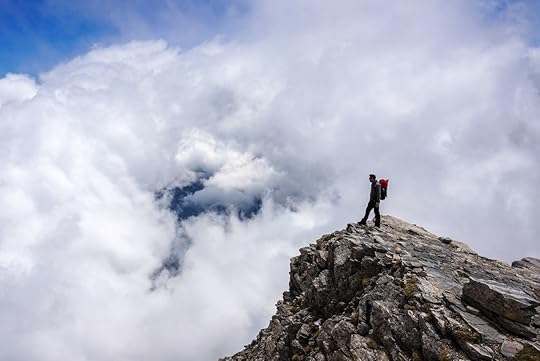
Photo: Alxcrs/Shutterstock
The hike itself is gorgeous, and the climate changes dramatically. At the bottom, you’ll be sweltering in the Greek heat — particularly if you’re hiking in the summer. You’ll cool down a bit in the forest. At the top, past the tree line and in a rock field, you’ll probably be shivering in the cold. Be sure to pack plenty of layers, including a hat and gloves.
More critically, the upper portion of the climb is full of loose rock. While the gorges and cliffs you’ll encounter are precarious enough, the loose rock is especially dangerous. People have been critically injured and even died on Mount Olympus when hit by rocks kicked down from hikers and mountain goats above. You should not endeavor to summit the peak without a hard hat.
Be prepared to call off your hike in the event of adverse weather. Summer months can bring thunderstorms to Mount Olympus, while in fall and winter the weather can actually be warmer at higher elevations. That said, Greece gets plenty of snow in the winter, so if you are thinking about summiting Mount Olympus in the winter or spring, you’ll need to be prepared for extreme weather and will need an ice ax.
Getting to the base of the mountain
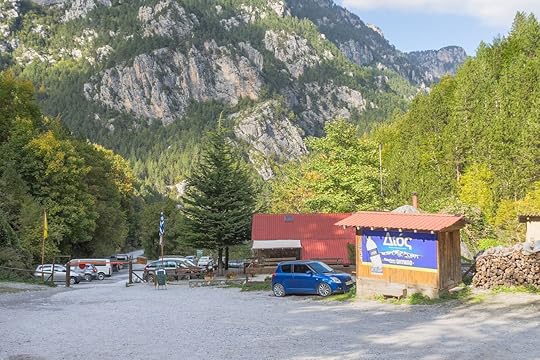
Photo: Shujaa_777/Shutterstock
We suggest getting an experienced guide to help you summit the mountain. There are many refuges to stay in. If you’re planning on staying at Spilios Agapitos, your guide will ensure you have made reservations ahead of time. If you arrange a guide in Athens, they can possibly take you by car all the way from Athens to the village of Litochoro, which is a four-hour drive. You can also travel by train to Litochoro, which takes over six hours.
If you’ve decided to include a couple of days in Thessaloniki on your Greek visit, as we recommend you do, then you’ll be just an hour’s drive away from Litochoro — or two to three hours by public transport, depending on time of day.
Either way, from Litochoro, it’s under 40 minutes by car to the town of Prionia, located at an elevation of 2,526 feet. If you’ve ridden in a car from Athens, you’ll find a parking lot right in Prionia. If you take a taxi from Litochoro to Prionia, the standard rate is 25 euros, or less than $28 at today’s exchange rate.
You have the alternative of starting your hike right in Litochoro, but the first hour and a half is pretty much a non-hike — more like a hot slog — along the road. It’ll take you a day’s hiking (five to six hours) to get to Prionia, so you’re better off saving the time and starting at Prionia. As explained later, you can spend that time on the mountain instead.
Starting your climb
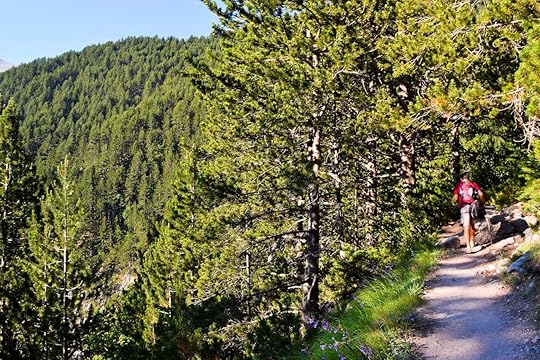
Photo: Jana Janina/Shutterstock
Leave Athens in the morning and you’ll be ready for lunch in Prionia, where there is a restaurant at the base of the trail. Then it’s time to start heading up.
The trails are marked at III-VIII level of difficulty, using international mountaineering standards. There are no super easy trails, but you could stay at a moderate level of difficulty at levels III-IV the whole time. You won’t be summiting, but you’ll enjoy this amazing national park, the first one established in Greece (1938), as well as see impressive views and get in a great hike.
If you want to follow the most frequented trail, you will ascend a little less than three miles to the Spilios Agapitos refuge, tucked into the dense pine forest at about 2,040 meters, or 6,700 feet. The hike to Spilios Agapitos is pretty much straight up, but the level of difficulty is moderate.
Refuges

Photo: Jana Janina/Shutterstock
There are 12 refuges in the Mount Olympus park, but there are three main ones. Spilios Agapitos is the best known among them. At Spilios Agapitos, we had nine people in our room, most of us sleeping in bunk-beds.
Most of the hikers you’ll find along the lower portion of the national park are Greek. However, at the refuge you will find a diversity of languages spoken. We heard German, Spanish, French, and English. There’s no need to bring sleeping bags. For $14.50, you can sleep at the refuge with blankets they provide. (You’ll sleep in your hiking clothes, as there aren’t sheets.) Alternatively, for just over $3 you can set up a tent and camp outdoors.
For an additional $5.50, we got a simple but very tasty dinner of pasta there. For breakfast, the homemade yogurt with locally sourced honey was not just a perfect way to fuel up for the day ahead — it was also delicious.
After the refuge, things get more difficult.

Photo: Andrii Lutsyk/Shutterstock
After the Spilios Agapitos refuge, you have two options. If you have more time, as did some Spanish women we met, you can hike towards Koryfes on the Muses Plateau, which is located at around 8,400 feet. They were planning on staying at the other refuges there, from where it’s even possible to explore some of the mountain’s other peaks. It’s a much less traveled path and one I’d love to undertake in the future.
Another option is climbing the Throne of Zeus. It’s located on Skolio, the second tallest peak on Mount Olympus at Skilio at 9,550 feet. You’ll need serious technical gear and will have to use ropes to scale the ledges here. If you’re an experienced climber, though, these climbs are all very doable.
My two friends and I were working in Athens for the summer and only had a weekend to devote to seeing the home of the Greek gods. So on this Sunday morning we took the more common route. We headed up towards Mytikas peak. It took us about three hours to reach Skala Peak. After Skala Peak, there’s a long scramble of about 600 feet that is really the most dangerous part of the hike. While falling is a large danger, tumbling stones from up high make up the largest danger — the sedimentary rock on Mount Olympus comes loose very easily.
Hiking up to the famed peak that one has read about in books so many times is a moving experience. Skirting along a cliff, scrambling over rocks, the steep angle of ascent, and the plummeting temperatures remind you that, while doable by any experienced hiker, this trek is no walk in the park. The limited signage, deep gorges, and sweeping vistas add to the untamed sensation of the hike, as well as the lingering sense that maybe some immortal aura is out there somewhere. 

More like this: The best islands you can day trip to from Athens
The post From Athens to the home of the gods: hiking Mount Olympus appeared first on Matador Network.

Best vegan restaurants in Toronto

Toronto has a strong culinary culture that’s reflected in the diverse cuisines and eclectic mix of eateries throughout Canada’s largest metropolitan area. Hundreds of restaurants line the streets of the city, from trendy coffee shops to fine-dining experiences to dessert bars. Among these options in a city known for veal sandwiches and oysters, vegan and plant-based restaurants are on the rise, offering far more than a basic salad or light plate of veggies. Throughout the city, you’ll find vegan pizzerias, vegan brunch spots, and even vegan comfort classics in popular joints frequented by both plant- and meat-lovers. These seven vegan spots in Toronto take it to the next level with innovative menus, each bringing a unique aspect to plant-based dining.
1. Planta Yorkville

Photo: Planta Yorkville/Facebook
Those looking for an upscale vegan experience will be impressed with Planta’s sophisticated decor and prolific menu. Beyond the copper geometric chairs and plant-themed artwork, Planta offers elegant dishes and creative concepts, such as the refreshing avocado lime tartare, a bright dish made with colorful beetroot tuna and smooth avocado chutney. A local favorite is the cauliflower tots, which are tasty fritters made with cauliflower and truffle almond parmesan. This lively spot in the lavish Yorkville neighborhood features a wide range of custom cocktails and botanical lattes, with the pistachio rose mylk and turmeric lemonade as noticeable highlights. Planta has four locations around Toronto, each with a different theme (try Planta Burger if you’re after an original vegan burger). The Yorkville location is the most date-friendly option.
Where: 1221 Bay St, Toronto, ON M5R 3P5, Canada
2. Rosalinda
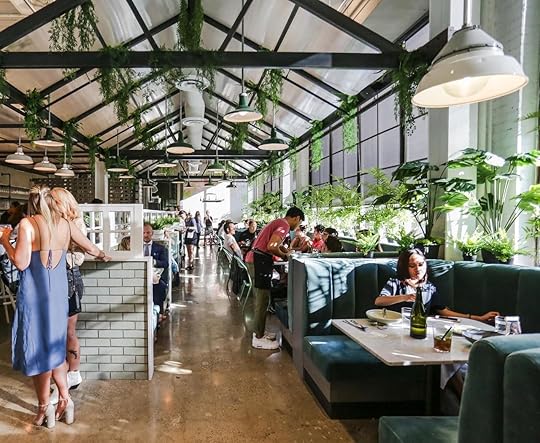
Photo: Rosalinda Restaurant/Facebook
Located in Toronto’s bustling Financial District, Rosalinda brings a trendy, Mexican flare to the city’s vegan scene. Lush green plants hang from the tall ceilings, creating an atmosphere that feels as though you’re dining in a greenhouse. Rosalinda serves quirky vegan spins on tacos, tostadas, and other everyday Mexican dishes. If you’re looking for a smoky treat, the savory jackfruit tacos are topped with crispy taro root. Other popular dishes include grilled sweet potato with mango pico de gallo and a Tijuana-style broccolini plate. But you’ll likely walk out the door with two words on repeat — spiced churros (vegan, naturally).
Where: 133 Richmond St W, Toronto, ON M5H 2L3, Canada
3. Virtuous Pie

Photo: Virtuous Pie Toronto/Facebook
Vegan pizza doesn’t always have a strong presence at traditional pizza joints, and the concept of vegan cheese, at least to some, remains questionable at best. Virtuous Pie squashes those notions with original hand-crafted pizza topped with nut-based cheeses, including almond ricotta and cashew mozzarella that actually taste like the dairy-based originals. The Ultraviolet pizza is the best option for those warming up to the idea of a vegan pie, as its walnut-arugula pesto base isn’t too daring and it comes topped with tomatoes, kale, caramelized onions, and pine nuts. For those looking for a more traditional style pizza, there’s the classic Margherita pizza with a creamy tomato base and cashew mozzarella. The joint also serves vegan ice cream, featuring special flavors like saffron rose water and Thai tea. It’s situated within the Little Italy neighborhood, not too far from downtown and the waterfront, making it a convenient spot for happy hour after a day exploring the city.
Where: 611 College St, Toronto, ON M6G 1B5, Canada
4. Hello 123

Photo: Hello 123/Facebook
Toronto’s brunch scene channels Portland quite strongly in that no one waits for the weekend to savor a decadent brunch. Avocado toast and fruit-topped waffles are all over town, with Hello 123 serving the best vegan versions. The daily menu pushes the boundaries of creativity when it comes to vegan breakfast, restructuring popular dishes like eggs Benedict, done here with a kale and tofu ricotta and smashed avocado. If you’re up for something sweet, the sourdough French toast with almond butter and sliced banana is a jolt to the senses. The restaurant is located on the trendy Queen Street West with rustic, exposed-brick walls and an intimate interior. In addition to the brunch menu, Hello 123’s condensed lunch and dinner menu offers a neat variety of eclectic bowls and salads with fresh ingredients.
Where: 1122 Queen St W, Toronto, ON M6J 1H9, Canada
5. The Hogtown Vegan

Photo: The Hogtown Vegan/Facebook
The Hogtown Vegan is the spot for when you want to take a break from plant-based greens and recall those fond memories of enjoying the meaty classics you had as a kid. Hogtown Vegan offers an extensive collection of burgers and sandwiches that are reminiscent of popular meaty classics, including the reuben, Philly cheesesteak, and pulled pork sandwich. Be sure to try the signature dish, Unchicken + Waffles. This vegan take on chicken and waffles is served with a side of sautéed greens and mashed sweet potato, and it’s topped off with cinnamon-spiced syrup. There are locations in both Kensington Market and the West End on Bloor Street.
Where: Kensington Market and 1056 Bloor St W, Toronto, ON M6H 1M3, Canada
6. Fresh on Spadina

Photo: Fresh Restaurants/Facebook
Long before vegan restaurants started popping up in the city, Fresh was the original source for plant-based food in Toronto. Options include brown rice and soba noodle bowls, loaded green salads, and vegetable tacos. Those with an adventurous palate should try the barbecue burger featuring the house-made patty topped with banana peppers, Napa cabbage, and quinoa onion rings glazed with crispy breadcrumbs. With one of the best plant-based beverage bars in the city, Fresh has a full menu page promoting cold-pressed juices, power shakes, smoothies, herbal lattes, house-made sodas, and kombucha cocktails. Fresh has five locations in Toronto, mostly with tight seating in a cozy environment. The Spadina location should be on the to-visit list, as it has recently expanded to offer a spacious and modern setting.
Where: 147 Spadina Ave, Toronto, ON M5V 2L7, Canada
7. Parka Food Co.

Photo: Parka Food Co./Facebook
Sometimes that comfort food craving takes a strong hold. Just like the modern and minimalist interior, Parka Food Co’s menu is kept simple, providing a healthier spin on diner classics such as burgers and mac and cheese. Each of the burgers is comprised of vegetables like crispy eggplant, marinated portobello, and cauliflower steak, the most popular of which is the portobello burger with organic portobello, crispy onion rings, arugula, plum tomato, and guacamole. The mac and cheese varieties are equally deserving of attention, though. Nowhere else in town can you eat your favorite childhood meal spun with sun-dried tomato, olive, truffle mushroom, and broccoli pesto.
Where: 424 Queen St W, Toronto, ON M5V 2A7, Canada 

More like this: The most diverse city in the world also has its most exciting food market
The post The 7 best and most innovative vegan restaurants in Toronto appeared first on Matador Network.

Destination running races in Florida

Florida is known for a lot of things, including great beaches, theme parks, and nightlife, but running isn’t at the top of people’s mind when it comes to a trip to the Sunshine State. Boston and New York more often come to mind for destination races. But come to Florida and you could run on great beaches, through legendary theme parks, and even on a world-famous NASCAR track. These five Florida races all offer unique places to run without all of the hills and highways of many other races — and they may even inspire the runner in you to get out there and explore Florida in a new way.
1. The DONNA Marathon Weekend

Photo: 26.2 with Donna The National Marathon to Finish Breast Cancer/Facebook
Located in Jacksonville, Florida, The DONNA Marathon Weekend is for runners of all ages and experience levels with six different race options to choose from. Families with kids can enjoy a 5K together while more experienced runners or people who want to push themselves to the limit can do a half marathon, full marathon, half marathon relay, ultramarathon, or event challenge. This Boston Marathon-qualifying race takes runners onto four of Jacksonville’s area beaches, through neighborhoods and street parties.
Since this race is a qualifier for more elite races, there are quite a few elite runners on hand running to get the guarantee for Boston. One thing that makes The DONNA stand out amongst other races is that the whole course is covered in spectators waiting to cheer you on throughout the race. The actual courses themselves are relatively flat and there’s not much incline, and the hardest part of the race is actually running on the beach.
Even with the views of the ocean, the sand runners are going through might not be hard packed because of tides and daily beach activity. The DONNA Marathon is the National Marathon to Finish Breast Cancer, and to date it has raised over $5 million to end breast cancer.
2. The Gate River Run

Photo: Gate River Run Team Gate/Facebook
The nation’s largest 15K race is held in Jacksonville every year, and it brings over 20,000 people to the city to run The Gate River Run. The race recently celebrated 40 years of running, with the inaugural race taking place in 1978. Runners go through the historic streets of Downtown Jacksonville and over two of the city’s seven bridges, the Main Street Bridge and the Hart Bridge, both of which go over the St. Johns River and are large enough to occupy the amount of runners going over them without feeling cramped.
The Main Street Bridge is toward the beginning of the race between mile one and mile two, while the Hart Bridge is at the end of the race spanning from the eight-mile marker to just past the nine-mile marker. The Hart Bridge is also nicknamed “The Green Monster” for its color and position during the latter part of the race.
Spectators line the entire course, even setting up small block parties in their front yards to hand out snacks and drinks, alcoholic and non-alcoholic, and cheer for runners as they go by. Like many races, the last few miles of this one are the hardest, but for the Gate River Run it’s because runners will go up and over the The Green Monster before crossing the finish line.
3. The Walt Disney World Marathon

Photo: Run Disney/Facebook
People travel from all over the world to visit Walt Disney World every single day. One weekend a year, though, people travel from across the globe to celebrate running in Florida at Walt Disney World by participating in the Walt Disney World Marathon, the fifth largest marathon in the United States. Yes, running can be filled with the magic and nostalgia of the Disney Parks, and you might even see Mickey Mouse and his pals out on the course with this one.
The race takes participants through all four Disney Theme parks, passing by familiar attractions, and is filled with great photo stops with characters, backdrops, and the themed Citizen timekeepers and mile markers. Runners from over 70 countries around the world come to participate in this race — with many winners of the race hailing from Brazil, including Giovanna Martins who has won the race three times.
Many elite runners come to participate in this Boston Qualifier since the course is mostly flat, and the course is wide enough for multiple people to run across without a hindrance. For those who aren’t elite runners, the Walt Disney World Marathon is a chance to push themselves, dress up in a fun costume themed to the event, and enjoy a race through the Disney Parks and resort hotels. In fact, many runners push themselves all weekend as they try to complete the Dopey Challenge, which includes a 5K, 10K, half marathon, and full marathon over the course of four days. Now that is impressive.
4. Star Wars Rival Run Half Marathon Weekend

Photo: Run Disney/Facebook
Another race held at Walt Disney World is the Star Wars Rival Run Half Marathon Weekend. This race weekend allows runners of all ages and expertise to unleash their inner Jedis and run through the Disney Parks. Before the race even begins, you’ll need to show your allegiance to the First Order or the Resistance by choosing a side to run with at the time of registration. The side you pick will be reflected on your race bib.
In the past, bibs have either been Kylo Ren or Rey, Finn or Captain Phasma, Han Solo or Boba Fett. This is truly a family-race weekend with races for toddlers, older kids, and adults. Throughout the course, runners will encounter famous Star Wars characters, entertainment, and other runners dressed up in their Star Wars best.
On race day the whole holding area and corral area feels very similar to Star Wars Celebration. Fans and runners there are dressed in cosplay or Disneybounding, and there are trivia questions and runner interviews about what Star Wars means to someone. In fact, this race could be thought of as a celebration of Star Wars just for runners. People can also use the Force to make it through a 5K, 10K, half marathon, or all three over the course of three days.
5. Daytona Beach Half Marathon

Photo: Daytona Beach Half Marathon/Facebook
Beaches and NASCAR are what Daytona is known for, so when you combine them into one epic half marathon, it’s sure to be a good time for 13.1 miles. The race starts off at the Daytona International Speedway, home to the Daytona 500, where runners will actually be able to run along the track of the Speedway.
Then the race heads towards the beach for a stretch along the sand before heading back toward Speedway and ONE DAYTONA to cross the finish line. Unlike some other beach runs, the Daytona Beach Half has runners going on hard-packed sand, so it’s less challenging than the loose sand people might be accustomed to on the beaches of Florida. This half marathon is worth the trip to Daytona Beach if you’re a NASCAR fan and avid runner. 

More like this: 8 awesome sport vacation ideas for athletes
The post Florida is the place for (fun) destination running races appeared first on Matador Network.

Matador Network's Blog
- Matador Network's profile
- 6 followers



